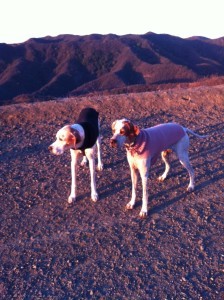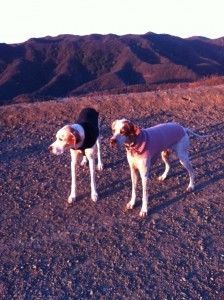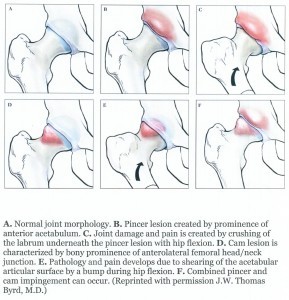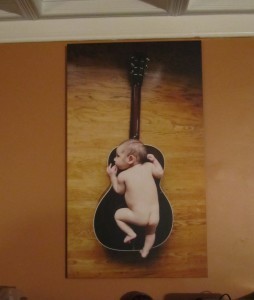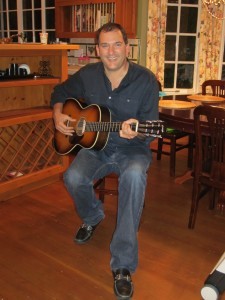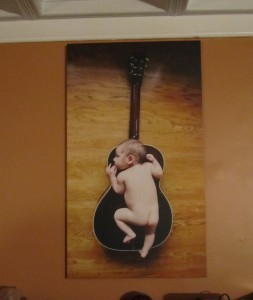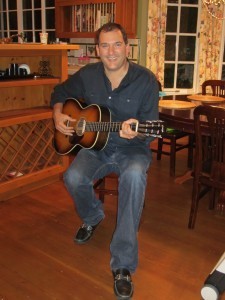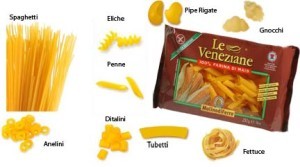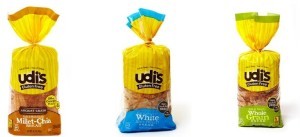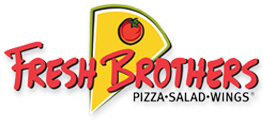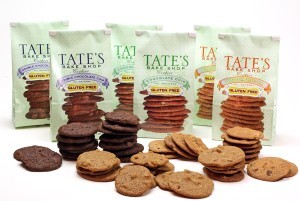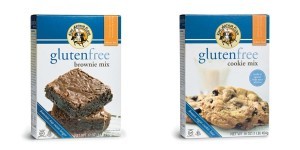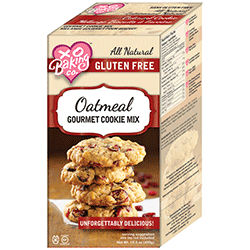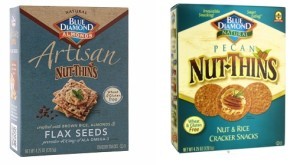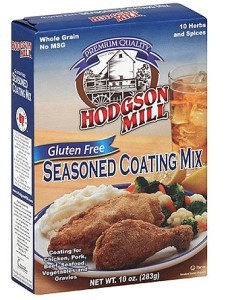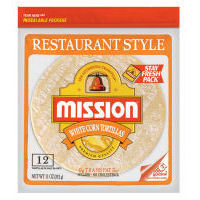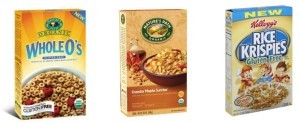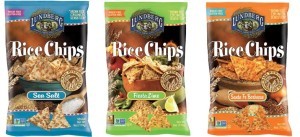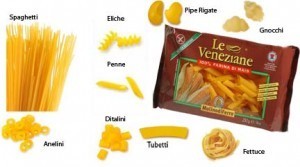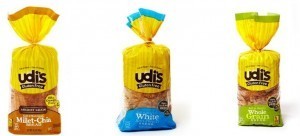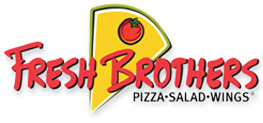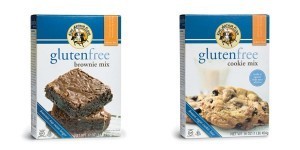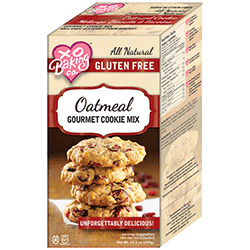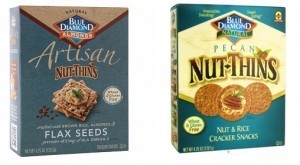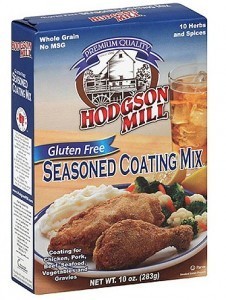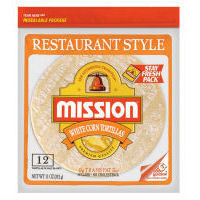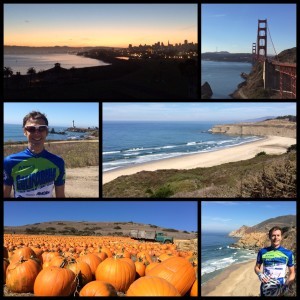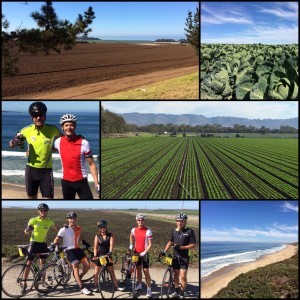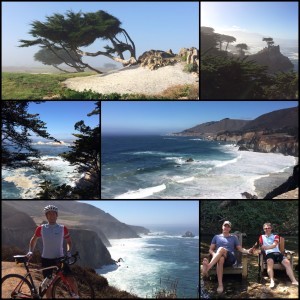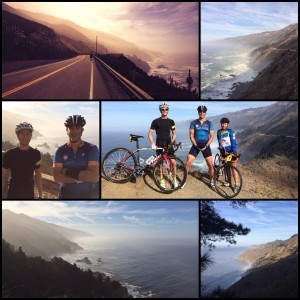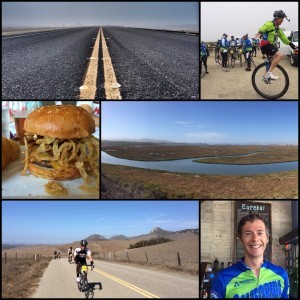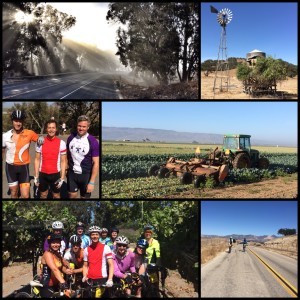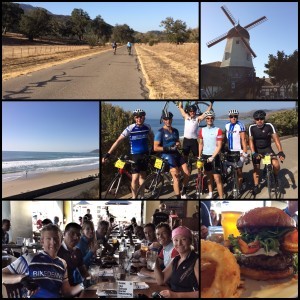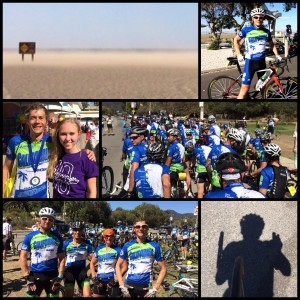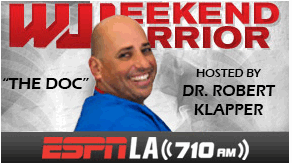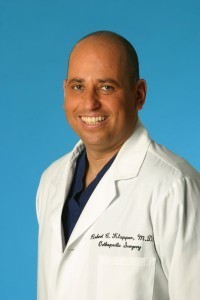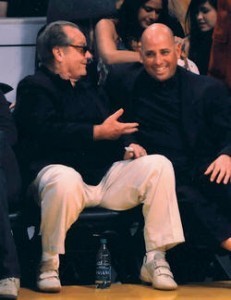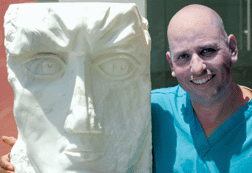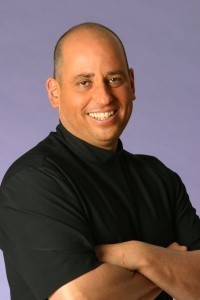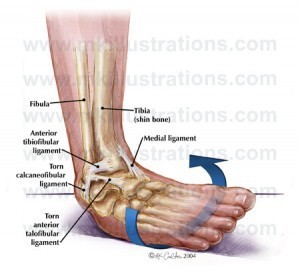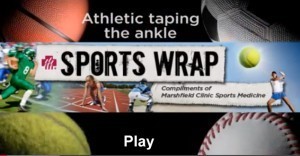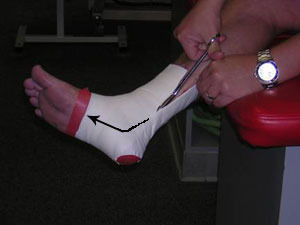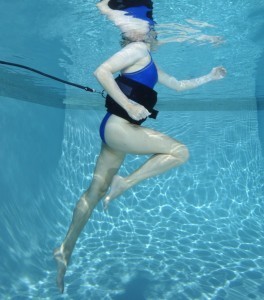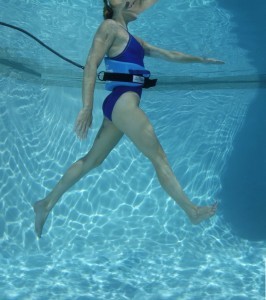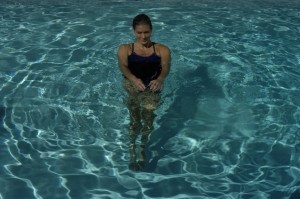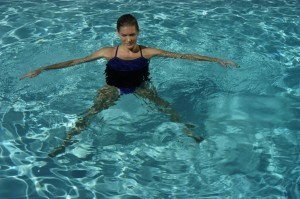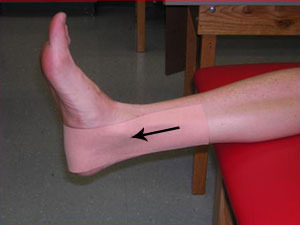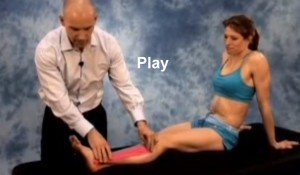Lynda Huey's Blog, page 4
January 2, 2014
10 Rules for Building a Fitness Lifestyle
Fitness doesn’t come overnight, although it can certainly disappear quickly. Ask any competitive athlete who was injured how soon they felt out of shape and they’ll tell you it happens within days. Research shows a loss of both muscle strength and cardiovascular fitness within a week of becoming inactive! From that, you can see how important it is never to let a full week go by without activity.

James switched from mountain biking to road biking a year ago and is now keeping up with L.A.’s elite bicyclists on the roads.
If this is the year you promised yourself and your friends that you were going to shape up, let me help you figure it out. If you were once in shape and let it all go, at least you can remember some of the joys of feeling strong and agile. Let’s aim back there once again. If you’ve never exercised, I’ll help you find where to start building the foundation of your new fitness lifestyle. Notice I didn’t say fitness program, but lifestyle. That’s where true fitness begins, and the lifestyle makes fitness continue.
Rule #1. Think of what you like to do.
If you don’t enjoy doing it, it won’t become part of your life. Think it through: if you don’t like lifting weights, think of other things. Can you walk comfortably? If you can, walking is the perfect activity with which to start. You can always spice up the walking by going to various places as in #5. Do you swim well enough to turn that into a potential lifestyle? If so, can you gain access to a pool? Do you have a bicycle that could become your new “thing?” Keep thinking. Have you wished you could try yoga or Pilates but never knew where to start? By trying each of them, you might get an inkling that “this is for me.” Or not. Don’t give up until you’ve found something you like. If you were a runner, rower, cyclist or other sports enthusiast, consider if it’s realistic to try to resume those activities. Would you really like doing that again? Are you more of an indoor workout person? Do you enjoy going to the gym, taking classes, seeing lots of other people working out? You may want to seek out the perfect instructor and class that fits your schedule, your temperament, and offers you encouragement along the way.

UCLA Sunset Canyon Recreation Center Pool
Rule #2. Ease into it slowly.
The most common reason people give up activity is because they try to do too much too quickly and either get sore, get hurt, or feel let down that they aren’t a superstar on their first day. Be realistic. How long has it been since you were last in any kind of shape? Give yourself a break and figure it might take about that same length of time to really get fit again. If you’ve never been what you would call “in shape,” then you won’t feel so much pressure to excel right away. Still, start slowly. Have good long-range goals, but low immediate goals for the first month. Here are some words that shouldn’t be in your conversation about your workouts for the first month: fast, hard, faster, harder, more, longer. You get the point. The first month you’re just establishing the fact that you ARE going to work out regularly. I’m going to go so far as say that you ARE going to do some small activity every day. That’s the best way to make it a lifestyle, not something that gets pushed out of your way after the first week. Start small, but do at least 10 minutes of something every day. You can find 10 minutes.
Don’t build up your workouts too quickly or you risk undue soreness or even injury. Never add more than 20-30% to your workout at any given time.
Rule #3. Find an alternative activity.
Weather or time restrictions can mean your planned activity simply isn’t possible. If it’s raining or your pool is closed this week, that doesn’t mean it’s OK not to work out. Do SOMETHING each day, even if it’s just 10 minutes of stretching and a few push-ups or abdominal crunches. Go to your local gym or college weight room. Be creative: run up a multi-level indoor parking lot. You can always find something to do even if you’re traveling out of the country in a totally different culture. Skip down the hallways or climb the stairs of your hotel.
If you’re overweight, your three top choices for an injury-free beginning are pool exercise, bicycling, and the elliptical machine. These are the best nurturing exercises that won’t cause trauma to your knees, hips, and back. Live in L.A? We have the most appealing warmer-than-you can imagine pool with a wide variety of pool classes and times. To help you get started, I’m offering 4 FREE CLASSES a week that I’m teaching during the month of January.

Waterpower Workout Class with Lynda Huey
Rule #4. Add a trainer or a training partner (two-legged or four-legged)
When someone else is going with you or if you’re meeting someone at the workout location, it’s easier to summon up the strength to go if lethargy sets in. You can’t let them down, so you go. Eventually you’ll feel that same kind of commitment to yourself and your own long-term well-being, but until you get there, you may want to hire a trainer to get you started. These days there are all kinds of private trainers – weight training, running, Pilates, pool, and exercise classes of many varieties. If your budget allows, give yourself one or two days a week of such supervised luxury to boost your ability to become your own trainer on the other days. Or invite a friend to train alongside you. Even if neither of you is expert at the activity, the company, and the “appointment” you set to meet will keep you rolling along.
If you’re an outdoor exerciser, take along your dog or dogs. If you’re walking or running the city streets, they’ll be on-leash to be safe. But if you can easily get to an off-leash hiking trail, set yourselves free and watch them romp! Walking uphill at sunrise watching the pooches scamper around is one of my favorite uplifting exercise routines. Instead of being locked in your own thoughts and keeping your eyes on the trail, look to the horizon as you walk to broaden your point of view.
Rule #5. Go to places that please you.
If you run, hike, or bike, scout out those places with the best terrain, most lovely views, and most pleasant weather. If it’s windy, a canyon may keep you blocked from the wind. If you love looking at the ocean or the mountains, make sure your place to exercise offers you that. If you can have a spectacular pool in which to swim for a few dollars more than your current one that doesn’t draw you in aesthetically, pay those few extra dollars to guarantee your desire to go there.
Rule #6. Find your discipline.
Can you think of an area of your life in which you exert discipline? Do you follow a strict budget and control the family’s spending well? Do you train your animals well and always apply consistent positive control over them? Is your car well-maintained on a regular schedule on which you never falter? You can probably think of another example of your own use of good discipline. Whatever it is, give some thought to how you summon up that discipline. Do you follow a time table, a calendar, or is it automatically in your head? Do you think ahead to the next event even before the current event is completed?
Put forth that same discipline toward building your new fitness lifestyle. Remember, it’s not just a program you’re going to start and (maybe) drop out of within the first month. This is something you are committing to having in your life from now on! By starting small, it will be easier to find those 10 minutes (at least) for exercise every day. Remind yourself to plan for the next day’s exercise while you do today’s. Plan the whole week if you work better that way. Just plan and stick with it.
If you stick with the same time of day, that helps build consistency, and nothing creates a true routine like consistency. Once your body expects to feel the heart pumping, the lungs and muscles working — everything functioning together to generate that Natural High, it will start to demand that you do it again and again!
Rule #7. Don’t let anyone talk you out of your new lifestyle.
People in your life right now know you one way. You’re working to develop another way of living your life. Some of your family or friends won’t like that, because it goes against the routine they have in place themselves. Be prepared to hold your ground. Ignore negative comments and decide to feel better, feel good, feel even GREAT as you get stronger and fitter. No words from anyone else can take away how fabulous it feels to fit nicely into your clothes, move easily through your daily life, and have more energy for everything you do.
Rule #8. Write down your activity.
Some people like getting a new small spiral notebook that will be dedicated strictly to their workout sessions.
Others like to add a line at the bottom of an existing calendar. If you are one of the people who takes pride in looking back at what you’ve accomplished, consider writing down what you do each day. Two or three months from now, when your fitness lifestyle has taken root, you’ll enjoy looking back and comparing what you’re doing at that point with where you started. For years I wrote how many miles I ran, what intervals I sprinted track (6 x 100M, 3 x 200M, etc.) or how many miles I hiked or biked. These days I no longer write anything down. My fitness lifestyle is built in from having two hounds that love to get outdoors and range around. This could be considered an optional point for veterans who just needed to be dusted off and put back on the path. But newcomers to the fitness lifestyle will want to build their confidence by watching their workouts stack up over the weeks and months in writing. It’s not optional for you if you’re just getting started.
Rule #9. Modify your fast-food intake.
Cut down how many of your meals come from fast-food restaurants. If you normally eat each day from such places, cut it back to only a few times a week. It’s hard to maintain enthusiasm for exercise if you’re weighted down by calorie-laden, nutritionally empty meals.
Maybe you haven’t been to a McDonald’s in years. Good for you! Maybe you’ve already found that Carl’s Jr. and In-N-Out Burgers can give you decent chicken sandwiches and burgers wrapped in lettuce and not bread. If you stop at a fast-food place only a few times a month, you’re probably doing OK with a nutritious diet. Eat lots of fresh fruits and vegetables and get enough sleep to feel good in the morning. Feeling fit and good requires at least 7-8 hours of sleep, so organize your life to make that happen.
Rule #10. Remember that it’s all about YOU!
You get to decide what activities you want to do. You get to decide what you eat. Here are two key places where you control what happens to your body. MAKE those decisions; don’t sit idly by while those around you make them all the time for you. Jump up and down if you must, but insist that you are creating a lifestyle for yourself, even if those around you overeat, don’t exercise, and laugh at those who are fit. Nothing is as fabulous as feeling fit and strong. Eating a big dessert lasts for a few minutes, but being able to bike like the wind in the sunshine, or climb up a hill with a breeze on your face will feel like an unbelievable treasure that is all yours. No one else’s. It is YOURS!
Now get going! Stick with these 10 Rules and by March you’ll find yourself already in the swing of something that is guiding you each day. It takes less and less discipline after you build the routine. But you have to START and do something every day.

Lynda competed in track and field in college, played beach volleyball, became a 5K road racer, mountain biker, and yoga advocate, then discovered body boarding and hiking, which are her two current favorite activities.
Lynda Huey, M.S., founder of CompletePT Pool & Land Physical Therapy and Huey’s Athletic Network, is a former athlete and coach whose own injuries led her into the water to find fitness and healing. Lynda is the author of four books on water exercise and water rehabilitation.
10 Rules for Building a Fitness Lifestyle
Fitness doesn’t come overnight, although it can certainly disappear quickly. Ask any competitive athlete who was injured how soon they felt out of shape and they’ll tell you it happens within days. Research shows a loss of both muscle strength and cardiovascular fitness within a week of becoming inactive! From that, you can see how important it is never to let a full week go by without activity.

James switched from mountain biking to road biking a year ago and is now keeping up with L.A.’s elite bicyclists on the roads.
If this is the year you promised yourself and your friends that you were going to shape up, let me help you figure it out. If you were once in shape and let it all go, at least you can remember some of the joys of feeling strong and agile. Let’s aim back there once again. If you’ve never exercised, I’ll help you find where to start building the foundation of your new fitness lifestyle. Notice I didn’t say fitness program, but lifestyle. That’s where true fitness begins, and the lifestyle makes fitness continue.
Rule #1. Think of what you like to do.
If you don’t enjoy doing it, it won’t become part of your life. Think it through: if you don’t like lifting weights, think of other things. Can you walk comfortably? If you can, walking is the perfect activity with which to start. You can always spice up the walking by going to various places as in #5. Do you swim well enough to turn that into a potential lifestyle? If so, can you gain access to a pool? Do you have a bicycle that could become your new “thing?” Keep thinking. Have you wished you could try yoga or Pilates but never knew where to start? By trying each of them, you might get an inkling that “this is for me.” Or not. Don’t give up until you’ve found something you like. If you were a runner, rower, cyclist or other sports enthusiast, consider if it’s realistic to try to resume those activities. Would you really like doing that again? Are you more of an indoor workout person? Do you enjoy going to the gym, taking classes, seeing lots of other people working out? You may want to seek out the perfect instructor and class that fits your schedule, your temperament, and offers you encouragement along the way.

UCLA Sunset Canyon Recreation Center Pool
Rule #2. Ease into it slowly.
The most common reason people give up activity is because they try to do too much too quickly and either get sore, get hurt, or feel let down that they aren’t a superstar on their first day. Be realistic. How long has it been since you were last in any kind of shape? Give yourself a break and figure it might take about that same length of time to really get fit again. If you’ve never been what you would call “in shape,” then you won’t feel so much pressure to excel right away. Still, start slowly. Have good long-range goals, but low immediate goals for the first month. Here are some words that shouldn’t be in your conversation about your workouts for the first month: fast, hard, faster, harder, more, longer. You get the point. The first month you’re just establishing the fact that you ARE going to work out regularly. I’m going to go so far as say that you ARE going to do some small activity every day. That’s the best way to make it a lifestyle, not something that gets pushed out of your way after the first week. Start small, but do at least 10 minutes of something every day. You can find 10 minutes.
Don’t build up your workouts too quickly or you risk undue soreness or even injury. Never add more than 20-30% to your workout at any given time.
Rule #3. Find an alternative activity.
Weather or time restrictions can mean your planned activity simply isn’t possible. If it’s raining or your pool is closed this week, that doesn’t mean it’s OK not to work out. Do SOMETHING each day, even if it’s just 10 minutes of stretching and a few push-ups or abdominal crunches. Go to your local gym or college weight room. Be creative: run up a multi-level indoor parking lot. You can always find something to do even if you’re traveling out of the country in a totally different culture. Skip down the hallways or climb the stairs of your hotel.
If you’re overweight, your three top choices for an injury-free beginning are pool exercise, bicycling, and the elliptical machine. These are the best nurturing exercises that won’t cause trauma to your knees, hips, and back. Live in L.A? We have the most appealing warmer-than-you can imagine pool with a wide variety of pool classes and times. To help you get started, I’m offering 4 FREE CLASSES a week that I’m teaching during the month of January.

Waterpower Workout Class with Lynda Huey
Rule #4. Add a trainer or a training partner (two-legged or four-legged)
When someone else is going with you or if you’re meeting someone at the workout location, it’s easier to summon up the strength to go if lethargy sets in. You can’t let them down, so you go. Eventually you’ll feel that same kind of commitment to yourself and your own long-term well-being, but until you get there, you may want to hire a trainer to get you started. These days there are all kinds of private trainers – weight training, running, Pilates, pool, and exercise classes of many varieties. If your budget allows, give yourself one or two days a week of such supervised luxury to boost your ability to become your own trainer on the other days. Or invite a friend to train alongside you. Even if neither of you is expert at the activity, the company, and the “appointment” you set to meet will keep you rolling along.
If you’re an outdoor exerciser, take along your dog or dogs. If you’re walking or running the city streets, they’ll be on-leash to be safe. But if you can easily get to an off-leash hiking trail, set yourselves free and watch them romp! Walking uphill at sunrise watching the pooches scamper around is one of my favorite uplifting exercise routines. Instead of being locked in your own thoughts and keeping your eyes on the trail, look to the horizon as you walk to broaden your point of view.
Rule #5. Go to places that please you.
If you run, hike, or bike, scout out those places with the best terrain, most lovely views, and most pleasant weather. If it’s windy, a canyon may keep you blocked from the wind. If you love looking at the ocean or the mountains, make sure your place to exercise offers you that. If you can have a spectacular pool in which to swim for a few dollars more than your current one that doesn’t draw you in aesthetically, pay those few extra dollars to guarantee your desire to go there.
Rule #6. Find your discipline.
Can you think of an area of your life in which you exert discipline? Do you follow a strict budget and control the family’s spending well? Do you train your animals well and always apply consistent positive control over them? Is your car well-maintained on a regular schedule on which you never falter? You can probably think of another example of your own use of good discipline. Whatever it is, give some thought to how you summon up that discipline. Do you follow a time table, a calendar, or is it automatically in your head? Do you think ahead to the next event even before the current event is completed?
Put forth that same discipline toward building your new fitness lifestyle. Remember, it’s not just a program you’re going to start and (maybe) drop out of within the first month. This is something you are committing to having in your life from now on! By starting small, it will be easier to find those 10 minutes (at least) for exercise every day. Remind yourself to plan for the next day’s exercise while you do today’s. Plan the whole week if you work better that way. Just plan and stick with it.
If you stick with the same time of day, that helps build consistency, and nothing creates a true routine like consistency. Once your body expects to feel the heart pumping, the lungs and muscles working — everything functioning together to generate that Natural High, it will start to demand that you do it again and again!
Rule #7. Don’t let anyone talk you out of your new lifestyle.
People in your life right now know you one way. You’re working to develop another way of living your life. Some of your family or friends won’t like that, because it goes against the routine they have in place themselves. Be prepared to hold your ground. Ignore negative comments and decide to feel better, feel good, feel even GREAT as you get stronger and fitter. No words from anyone else can take away how fabulous it feels to fit nicely into your clothes, move easily through your daily life, and have more energy for everything you do.
Rule #8. Write down your activity.
Some people like getting a new small spiral notebook that will be dedicated strictly to their workout sessions.
Others like to add a line at the bottom of an existing calendar. If you are one of the people who takes pride in looking back at what you’ve accomplished, consider writing down what you do each day. Two or three months from now, when your fitness lifestyle has taken root, you’ll enjoy looking back and comparing what you’re doing at that point with where you started. For years I wrote how many miles I ran, what intervals I sprinted track (6 x 100M, 3 x 200M, etc.) or how many miles I hiked or biked. These days I no longer write anything down. My fitness lifestyle is built in from having two hounds that love to get outdoors and range around. This could be considered an optional point for veterans who just needed to be dusted off and put back on the path. But newcomers to the fitness lifestyle will want to build their confidence by watching their workouts stack up over the weeks and months in writing. It’s not optional for you if you’re just getting started.
Rule #9. Modify your fast-food intake.
Cut down how many of your meals come from fast-food restaurants. If you normally eat each day from such places, cut it back to only a few times a week. It’s hard to maintain enthusiasm for exercise if you’re weighted down by calorie-laden, nutritionally empty meals.
Maybe you haven’t been to a McDonald’s in years. Good for you! Maybe you’ve already found that Carl’s Jr. and In-N-Out Burgers can give you decent chicken sandwiches and burgers wrapped in lettuce and not bread. If you stop at a fast-food place only a few times a month, you’re probably doing OK with a nutritious diet. Eat lots of fresh fruits and vegetables and get enough sleep to feel good in the morning. Feeling fit and good requires at least 7-8 hours of sleep, so organize your life to make that happen.
Rule #10. Remember that it’s all about YOU!
You get to decide what activities you want to do. You get to decide what you eat. Here are two key places where you control what happens to your body. MAKE those decisions; don’t sit idly by while those around you make them all the time for you. Jump up and down if you must, but insist that you are creating a lifestyle for yourself, even if those around you overeat, don’t exercise, and laugh at those who are fit. Nothing is as fabulous as feeling fit and strong. Eating a big dessert lasts for a few minutes, but being able to bike like the wind in the sunshine, or climb up a hill with a breeze on your face will feel like an unbelievable treasure that is all yours. No one else’s. It is YOURS!
Now get going! Stick with these 10 Rules and by March you’ll find yourself already in the swing of something that is guiding you each day. It takes less and less discipline after you build the routine. But you have to START and do something every day.

Lynda competed in track and field in college, played beach volleyball, became a 5K road racer, mountain biker, and yoga advocate, then discovered body boarding and hiking, which are her two current favorite activities.
Lynda Huey, M.S., founder of CompletePT Pool & Land Physical Therapy and Huey’s Athletic Network, is a former athlete and coach whose own injuries led her into the water to find fitness and healing. Lynda is the author of four books on water exercise and water rehabilitation.
November 1, 2013
Jason Snibbe, M.D. and the Hottest Topic in Orthopedics
Chances are, if you are under 50 and experience sudden, sharp hip pain, you’ll eventually hear the name Jason Snibbe. You may go to an orthopedist in New York, San Francisco, Nashville, Vail, or elsewhere, and you’ll find there’s a close-knit band of young surgeons who are all members of the same group – the International Society for Hip Arthroscopy (ISHA).
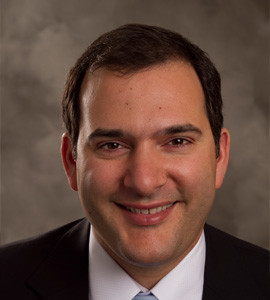
Jason C. Snibbe, M.D.
In years past, doctors often waited years until patients were bad enough that they needed a total hip replacement. Now we can remodel the bone to prevent impingement and reconstruct the labrum. Those smaller surgeries now can prevent the need for hip replacement in the future.
It wasn’t until 2003 that a Swiss doctor coined the phrase FAI (femoroacetabular impingement), or hip impingement; the surgical instrument companies finally caught up in 2007 and developed longer, curved instruments to get around corners. And in the last six years, there’s been an explosion of new arthroscopic hip surgeries that simply didn’t exist until recently. Marc Philipon, M.D., was arguably the first to focus strictly on these new surgeries and push the envelope on what could be done arthroscopically. He taught Jason Snibbe, M.D. his new FAI and labral reconstruction surgeries.
If you have a hip impingement (FAI), corrections can be made arthroscopically in which the offending bone is removed to eliminate the impingement. The drawings below show the two types of FAI, pincer and cam. The word morphology means the study of form and structure. A lesion is an injury or wound.
If you have a torn labrum, you want to keep it (not have it removed) and have it reconstructed if necessary. Dr. Snibbe now has years of experience in grafting tissue from an iliotibial band or other tendons onto the hip socket in order to rebuild a workable labrum for patients. He is conducting a two-year study with USC on the recovery of such patients and has learned how not to create hip flexor tendinitis following labral reconstruction surgery. The key is to first regain gentle range of motion and rotation in the hip and then focus on strengthening the gluteal muscles.
But let’s start at the beginning. Jason Snibbe was born in Brentwood, California and went to elementary and high school in L.A. As an only child, he wanted to break away from being the center of attention and go away for college, but his parents wanted him to stay in L.A., so he attended USC. But he was determined to be on his own for medical school, so he went to the first school that accepted him, the University of Wisconsin in Milwaukee. “It was the best thing for me,” he said. “I learned to rely on myself since no family was around. I had to do my own laundry, put food in the refrigerator.”
After four years in Milwaukee, my residency director told me he had done his residency at Rochester. He kept telling me that Rochester was probably the best residency in the country as far as training and experience so that I could get into any fellowship I wanted after that. So I met the people there and thought it was great. I was interested in sportsmedicine and Rochester had a strong program, so I selected Rochester and got in.”
The second year at Rochester is known across the country as being the hardest second year anywhere. It was grueling, a lot of hard work, but the kind of hard work where nothing could ever hurt you after that. You could wake me up in the middle of the night and tell me I had to operate, and I would be able to do a 3-hour surgery without blinking, because it made me that strong. It built me a strong foundation.”
After nearly a decade away from L.A., Dr. Snibbe returned home to do a fellowship with Kerlan-Jobe, the doctors who became known in the 1960s and 70s for treating the Lakers and other top athletes. “The best thing was that we rotated with ten different sports surgeons, so we got to see how each did things differently. So when I’m in a surgery and something isn’t working, I think – OK, I can do it this way, the way Dr. Yocum or Dr. Lombardo would do it.”
That kind of broad-based fellowship seemed the best to Dr. Snibbe, so he tells his own fellows, “If you want to do hip arthroscopy, you have to go to New York City and spend time with Brian Kelly; you need to go see Tom Byrd in Nashville, Marc Philipon in Vail, and Tom Sampson in San Francisco. Go spend a day in their operating room and watch them do what they do.” This friendly team of rivals refers patients back and forth depending on the needs of their patients, and they’re helping develop the next set of hip arthroscopists to follow their lead. “I train ten fellows a year. It’s something I’m very proud of, because one of the things that makes them competitive in getting a job is being good at doing hip arthroscopy. It’s the hottest topic in orthopedics today.” Every year, Dr. Snibbe invites his ten fellows to his house for what he calls their Journal Club. “It’s supposed to be a journal discussion, and we do a little of that, but mostly it’s a chance for them to hang out, let their hair down, bring their wives, meet my family, and my wife Yaas cooks for all of us. Then I’ll bring out a few guitars from my acoustic guitar collection and pass them around. One guy will sing a song, then I’ll sing a song, then we’ll play some funny songs like Guns N’ Roses.”
Dr. Snibbe’s guitar collection is extensive. He bought his first Martin guitar after earning money at a summer research job in 1995. Since then he’s added some Gibson guitars, Collings guitars, a custom-made guitar from Koa wood in Hawaii, and a Lowden guitar made in Ireland. Stephen Stills of Crosby, Stills and Nash fame, has become his friend and gave him a 12-string guitar. There’s even a guitar on his wall with a photo of his newborn girl lying on it. “Ours is a house where every room in the house has music and you can program it from your iPhone. Sonos is the app we have on the phone that lets us have music no matter where we are – in the Jacuzzi, pool, bedroom, living room, green room, or kitchen. We have music!”
To tune his guitar, he uses an app on his iPhone called Guitar Tool Kit. He picks a string and twists the tuning knob until the indicator is dead center on the tone line.
Dr. Snibbe’s family tree is most interesting. “Both my parents live in Brentwood and they’re both clinical psychologists. They were divorced when I was five. They both became famous when they wrote a book. Mom is originally from Iran and my father is a blond-haired, blue-eyed American. My mother’s father came to America to learn about irrigation techniques, then when given the opportunity, brought his family from Iran to be educated at the University of Utah, where he earned a graduate degree and taught sociology for thirty years. My father’s father was Richard Snibbe, AIA, a famous architect who was part of a Manhattan firm that designed the tennis stadium and some of the dorms at Princeton University, the U.S. Embassy in India, and other big projects. My dad went to Boston University for undergrad then wanted to explore the Rockies. That was why my parents met at the University of Utah where they both got advanced degrees in psychology.
Today Dr. Snibbe continues to do some advanced shoulder surgeries, but he suspects that over the next years, he’ll evolve into a hip surgeon, A-Z, meaning that he’ll do everything from the smallest to the most complicated hip arthroscopy as well as total hip replacement surgeries. He sees many changes ahead. “Our world is evolving so fast that the way I do hip arthroscopy now is going to change in two years. It could be completely different.”
Regardless of the changes to come, he feels he’s standing on solid ground. “Marc Philipon in Vail taught me how to be a good surgeon technically, but it was Tom Byrd in Nashville who taught me judgment – how to make a good decision on who to operate on and who not to operate on. The patients you don’t operate on are often the most appreciative years later and they come back to thank you, because you made that decision.”
Lynda Huey, M.S., founder of CompletePT and Huey’s Athletic Network, is a former athlete and coach whose own injuries led her into the water to find fitness and healing. She was educated at San Jose State University where she starred on the track and field team during its golden years. Lynda is the author of four books on water exercise and water rehabilitation.
Jason Snibbe, M.D. and the Hottest Topic in Orthopedics
Chances are, if you are under 50 and experience sudden, sharp hip pain, you’ll eventually hear the name Jason Snibbe. You may go to an orthopedist in New York, San Francisco, Nashville, Vail, or elsewhere, and you’ll find there’s a close-knit band of young surgeons who are all members of the same group – the International Society for Hip Arthroscopy (ISHA).
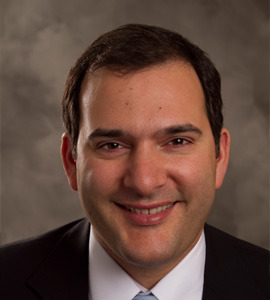
Jason C. Snibbe, M.D.
It wasn’t until 2003 that a Swiss doctor coined the phrase FAI (femoroacetabular impingement), or hip impingement; the surgical instrument companies finally caught up in 2007 and developed longer, curved instruments to get around corners. And in the last six years, there’s been an explosion of new arthroscopic hip surgeries that simply didn’t exist until recently. Marc Philipon, M.D., was arguably the first to focus strictly on these new surgeries and push the envelope on what could be done arthroscopically. He taught Jason Snibbe, M.D. his new FAI and labral reconstruction surgeries.
If you have a hip impingement (FAI), corrections can be made arthroscopically in which the offending bone is removed to eliminate the impingement. The drawings below show the two types of FAI, pincer and cam. The word morphology means the study of form and structure. A lesion is an injury or wound.
If you have a torn labrum, you want to keep it (not have it removed) and have it reconstructed if necessary. Dr. Snibbe now has years of experience in grafting tissue from an iliotibial band or other tendons onto the hip socket in order to rebuild a workable labrum for patients. He is conducting a two-year study with USC on the recovery of such patients and has learned how not to create hip flexor tendinitis following labral reconstruction surgery. The key is to first regain gentle range of motion and rotation in the hip and then focus on strengthening the gluteal muscles.
But let’s start at the beginning. Jason Snibbe was born in Brentwood, California and went to elementary and high school in L.A. As an only child, he wanted to break away from being the center of attention and go away for college, but his parents wanted him to stay in L.A., so he attended USC. But he was determined to be on his own for medical school, so he went to the first school that accepted him, the University of Wisconsin in Milwaukee. “It was the best thing for me,” he said. “I learned to rely on myself since no family was around. I had to do my own laundry, put food in the refrigerator.”
After four years in Milwaukee, my residency director told me he had done his residency at Rochester. He kept telling me that Rochester was probably the best residency in the country as far as training and experience so that I could get into any fellowship I wanted after that. So I met the people there and thought it was great. I was interested in sportsmedicine and Rochester had a strong program, so I selected Rochester and got in.”
The second year at Rochester is known across the country as being the hardest second year anywhere. It was grueling, a lot of hard work, but the kind of hard work where nothing could ever hurt you after that. You could wake me up in the middle of the night and tell me I had to operate, and I would be able to do a 3-hour surgery without blinking, because it made me that strong. It built me a strong foundation.”
After nearly a decade away from L.A., Dr. Snibbe returned home to do a fellowship with Kerlan-Jobe, the doctors who became known in the 1960s and 70s for treating the Lakers and other top athletes. “The best thing was that we rotated with ten different sports surgeons, so we got to see how each did things differently. So when I’m in a surgery and something isn’t working, I think – OK, I can do it this way, the way Dr. Yocum or Dr. Lombardo would do it.”
That kind of broad-based fellowship seemed the best to Dr. Snibbe, so he tells his own fellows, “If you want to do hip arthroscopy, you have to go to New York City and spend time with Brian Kelly; you need to go see Tom Byrd in Nashville, Marc Philipon in Vail, and Tom Sampson in San Francisco. Go spend a day in their operating room and watch them do what they do.” This friendly team of rivals refer patients back and forth depending on the needs of their patients, and they’re helping develop the next set of hip arthroscopists to follow their lead. “I train ten fellows a year. It’s something I’m very proud of, because one of the things that makes them competitive in getting a job is being good at doing hip arthroscopy. It’s the hottest topic in orthopedics today.” Every year, Dr. Snibbe invites his ten fellows to his house for what he calls their Journal Club. “It’s supposed to be a journal discussion, and we do a little of that, but mostly it’s a chance for them to hang out, let their hair down, bring their wives, meet my family, and my wife Yaas cooks for all of us. Then I’ll bring out a few guitars from my acoustic guitar collection and pass them around. One guy will sing a song, then I’ll sing a song, then we’ll play some funny songs like Guns N’ Roses.”
Dr. Snibbe’s guitar collection is extensive. He bought his first Martin guitar after earning money at a summer research job in 1995. Since then he’s added some Gibson guitars, Collings guitars, a custom-made guitar from Koa wood in Hawaii, and a Lowden guitar made in Ireland. Stephen Stills of Crosby, Stills and Nash fame, has become his friend and gave him a 12-string guitar. There’s even a guitar on his wall with a photo of his newborn girl lying on it. “Ours is a house where every room in the house has music and you can program it from you iPhone. Sonos is the app we have on the phone that lets us have music no matter where we are – in the Jacuzzi, pool, bedroom, living room, green room, or kitchen. We have music!”
To tune his guitar, he uses an app on his iPhone called Guitar Tool Kit. He picks a string and twists the tuning knob until the indicator is dead center on the tone line.
Dr. Snibbe’s family tree is most interesting. “Both my parents live in Brentwood and they’re both clinical psychologists. They were divorced when I was five. They both became famous when they wrote a book. Mom is originally from Iran and my father is a blond-haired, blue-eyed American. My mother’s father came to America to learn about irrigation techniques, then when given the opportunity, brought his family from Iran to be educated at the University of Utah, where earned a graduate degree and taught sociology for thirty years. My father’s father was Richard Snibbe, AIA, a famous architect who was part of a Manhattan firm that designed the tennis stadium and some of the dorms at Princeton University, the U.S. Embassy in India, and other big projects. My dad went to Boston University for undergrad then wanted to explore the Rockies. That was why my parents met at the University of Utah where they both got advanced degrees in psychology.
Today Dr. Snibbe continues to do some advanced shoulder surgeries, but he suspects that over the next years, he’ll evolve into a hip surgeon, A-Z, meaning that he’ll do everything from the smallest to the most complicated hip arthroscopy as well as total hip replacement surgeries. He sees many changes ahead. “Our world is evolving so fast that the way I do hip arthroscopy now is going to change in two years. It could be completely different.”
Regardless of the changes to come, he feels he’s standing on solid ground. “Marc Philipon in Vail taught me how to be a good surgeon technically, but it was Tom Byrd in Nashville who taught me judgment – how to make a good decision on who to operate on and who not to operate on. The patients you don’t operate on are often the most appreciative years later and they come back to thank you, because you made that decision.
Lynda Huey, M.S., founder of CompletePT and Huey’s Athletic Network, is a former athlete and coach whose own injuries led her into the water to find fitness and healing. She was educated at San Jose State University where she starred on the track and field team during its golden years. Lynda is the author of four books on water exercise and water rehabilitation.
October 23, 2013
Favorite Gluten-Free Products
When I first started a gluten-free diet eight years ago, virtually no one had heard of gluten or knew what it was. (It’s wheat, rye, barley and any oats that are processed on the same machinery as the others.) I was stuck with meats, vegetables, salads, and fruits. Entire aisles of the grocery store no longer existed for me – no crackers, cookies, chips, pastries, or breads. These days, so many choices exist in all of those categories. Some are exceptional; some I have thrown out after trying one bite.
To save you the time and expense of throwing out the bad attempts at GF food, I made this list.
Pasta: Le Veneziene, which comes from Italy, of course. There are plenty of bad rice and quinoa attempts, and until I found Le Veneziene I used Mrs. Beardsley’s three-color rice fusili. If you’re allergic to corn, stick with the second best by Mrs. Beardsley. If you can eat corn and want pasta that doesn’t make you think you’re eating anything but great Italian pasta, order Le Veneziene online.
Bread: Udi’s whole grain bread. Find it in the freezer section of the best grocery stores. I buy mine at Vicente Foods market in Brentwood or at any Whole Foods market. They have white and millet options, but I prefer the whole grain. It toasts up beautifully and is great for sandwiches.
Pizza: I lived without pizza for four years before GF products became available. What a relief! There are several almost-edible ones in the freezer sections of most grocery stores these days, but there are also some really terrible, toss-in-the-garbage ones, too. Conte’s margarita pizza got tossed. Amy’s is OK, and Venice Pizza by California Food Company is darn good. It comes in three flavors – basil/pesto/ cheese, mushroom and their new one that just came out is a margarita pizza that is lactose free as well.
But only one pizza is like eating REAL pizza: Fresh Brothers. Get ready to drool and smack – it is THAT good. I get their GF Bar-B-Q chicken pizza. Unbelievably fantastic! So is their Farmers’ Market salad, which makes two salads for me.
Sorry, but looks like you have to live in the L.A. area to get to one of their nine locations from Thousand Oaks to Glendale to Santa Monica to Torrance. Or have them deliver. I often call them on my drive home and it’s there shortly after I arrive.
Pastries: Pamela’s “small bites” ginger snaps and chocolate chip cookies were my favorite years ago before they were eclipsed by newer products. (I threw away many of the large-sized Pamela’s cookies and won’t consider them anymore.) When Tate’s came out with their perfect GF chocolate chip cookie, all others vanished from my world. Tate’s Ginger Zinger is also a surprising cookie — big chunks of real ginger that burst onto your taste buds. Their double chocolate GF cookie doesn’t suit me, but you might like it.
The Sensitive Baker in Culver City makes great cookies, cakes, brownies, bagels – you name it. When I want to make my own sweets, I get the King Arthur brownie mix at Whole Foods. Or the King Arthur brown sugar cookie mix and add walnuts and chocolate chips.
Then there’s XO Baking Company. I tried their cornbread, which was very good, but then I ordered the oatmeal cookie mix and haven’t switched since. It’s unbelievably perfect in smell, texture and taste. Too bad, you have to order online at this point and wait while it comes from Troy, NY. (Just looked it up. It’s west of Boston.) Again, I add walnuts and chocolate chips.
Crackers: Don’t fall for the first GF cracker that was made and has been around for years, Mary’s Gone Crackers. They’re dry and tasteless. Crackers have improved greatly in these past years. My favorites are Blue Diamond Nut Thins, which come in a variety of nut flavors. I’ve tried many, but my absolute favorite is Pecan. Salty and satisfying, I use it to scoop out egg salad for an afternoon snack.
If I’m going to eat something salty, like white fish salad from the Vicente Foods deli, I’ll use the sturdy, milder-flavored Artisan Flax Seeds Nut Thins to balance out the strong flavor of the fish. Both are great crackers that I carry with me on every trip – plane, train, boat, or car. (Sounded so good I had to just eat some with white fish right now.)
Somewhere between a cracker and a melba-toast-like bread is Cracklebred from Spain. Perfect texture; not very much taste, but what there is seems mildly sweet and pure. I think of it as the perfect super-low-calorie delivery system for sandwich foods when I don’t have or want GF bread. I order it online from Amazon in a case of 12 boxes. http://www.amazon.com/Natural-Nectar-Cracklebred-Original-3-5-Ounce/dp/B002EE5GMM The packaging holds up and when you open each box, it’s still fresh, even if used over several months. There are three flavors but I like the original best.
Seasoned Coating Mix: I used to make fried chicken on special occasions, especially ones that involved my great pal Wilt Chamberlain, but fried chicken went out the window when I went gluten-free. Now I can fry tasty chicken and red snapper with Hodgson Mill’s Seasoned Coating Mix. I know, I know they changed the name to Pacific Rock fish, but I still tell the man behind the counter that I want some Red Snapper, and because he’s in protest over the name change, he calls it that, too. This is another product I order by the case, six boxes that I share with others and use every time I cook up some snapper. Delish!
Tortillas: You would think that corn tortillas would be gluten-free, right? But when you go gluten-free, you’ve got to start reading the ingredients list, and many corn tortillas contain wheat flour. Mission white corn tortillas are by far the best of the gluten-free tortillas I’ve found. Heat a tortilla on both sides over the flame of a gas stove, scramble up some eggs and onions, and you’ve got a great taco!
Cold Cereal: All of the Chex cereals except Wheat Chex went gluten-free early in the game, which was about the only cereal I could find for years. Now Rice Krispies has a GF version and Nature’s Path has several cereals I enjoy.
Chips: Look for corn chips or potato chips that have only salt and oil in the ingredient list. My tried and true favorite chip, however is neither of those, but a rice chip made by the Lundberg family. They’re satisfying and not oily like other chips. I’ve tried many of their flavors, some of which overpowered me. I liked the Santa Fe flavor, then the Fiesta lime taste. These days I stick with the simple Sea Salt variety.
Of course the best gluten-free diet is the way I started – fresh foods, plain and simple without the packages I’ve shown you here. I don’t eat these products every day or even every week, but when I feel like having something like this, at least there’s now a GF alternative. You have to keep in mind that eating cookies is still eating cookies whether there’s gluten in them or not, so don’t eat the whole batch just because they’re gluten-free.
Lynda Huey, M.S., founder of CompletePT and Huey’s Athletic Network, is a former athlete and coach whose own injuries led her into the water to find fitness and healing. She was educated at San Jose State University where she starred on the track and field team during its golden years. Lynda is the author of four books on water exercise and water rehabilitation.
Favorite Gluten-Free Products
When I first started a gluten-free diet eight years ago, virtually no one had heard of gluten or knew what it was. (It’s wheat, rye, barley and any oats that are processed on the same machinery as the others.) I was stuck with meats, vegetables, salads, and fruits. Entire aisles of the grocery store no longer existed for me – no crackers, cookies, chips, pastries, or breads. These days, so many choices exist in all of those categories. Some are exceptional; some I have thrown out after trying one bite.
To save you the time and expense of throwing out the bad attempts at GF food, I made this list.
Pasta: Le Veneziene, which comes from Italy, of course. There are plenty of bad rice and quinoa attempts, and until I found Le Veneziene I used Mrs. Beardsley’s three-color rice fusili. If you’re allergic to corn, stick with the second best by Mrs. Beardsley. If you can eat corn and want pasta that doesn’t make you think you’re eating anything but great Italian pasta, order Le Veneziene online.
Bread: Udi’s whole grain bread. Find it in the freezer section of the best grocery stores. I buy mine at Vicente Foods market in Brentwood or at any Whole Foods market. They have white and millet options, but I prefer the whole grain. It toasts up beautifully and is great for sandwiches.
Pizza: I lived without pizza for four years before GF products became available. What a relief! There are several almost-edible ones in the freezer sections of most grocery stores these days, but there are also some really terrible, toss-in-the-garbage ones, too. Conte’s margarita pizza got tossed. Amy’s is OK, and Venice Pizza by California Food Company is darn good. It comes in three flavors – basil/pesto/ cheese, mushroom and their new one that just came out is a margarita pizza that is lactose free as well.
But only one pizza is like eating REAL pizza: Fresh Brothers. Get ready to drool and smack – it is THAT good. I get their GF Bar-B-Q chicken pizza. Unbelievably fantastic! So is their Farmers’ Market salad, which makes two salads for me.
Sorry, but looks like you have to live in the L.A. area to get to one of their nine locations from Thousand Oaks to Glendale to Santa Monica to Torrance. Or have them deliver. I often call them on my drive home and it’s there shortly after I arrive.
Pastries: Pamela’s “small bites” ginger snaps and chocolate chip cookies were my favorite years ago before they were eclipsed by newer products. (I threw away many of the large-sized Pamela’s cookies and won’t consider them anymore.) When Tate’s came out with their perfect GF chocolate chip cookie, all others vanished from my world. Tate’s Ginger Zinger is also a surprising cookie — big chunks of real ginger that burst onto your taste buds. Their double chocolate GF cookie doesn’t suit me, but you might like it.
The Sensitive Baker in Culver City makes great cookies, cakes, brownies, bagels – you name it. When I want to make my own sweets, I get the King Arthur brownie mix at Whole Foods. Or the King Arthur brown sugar cookie mix and add walnuts and chocolate chips.
Then there’s XO Baking Company. I tried their cornbread, which was very good, but then I ordered the oatmeal cookie mix and haven’t switched since. It’s unbelievably perfect in smell, texture and taste. Too bad, you have to order online at this point and wait while it comes from Troy, NY. (Just looked it up. It’s west of Boston.) Again, I add walnuts and chocolate chips.
Crackers: Don’t fall for the first GF cracker that was made and has been around for years, Mary’s Gone Crackers. They’re dry and tasteless. Crackers have improved greatly in these past years. My favorites are Blue Diamond Nut Thins, which come in a variety of nut flavors. I’ve tried many, but my absolute favorite is Pecan. Salty and satisfying, I use it to scoop out egg salad for an afternoon snack.
If I’m going to eat something salty, like white fish salad from the Vicente Foods deli, I’ll use the sturdy, milder-flavored Artisan Flax Seeds Nut Thins to balance out the strong flavor of the fish. Both are great crackers that I carry with me on every trip – plane, train, boat, or car. (Sounded so good I had to just eat some with white fish right now.)
Somewhere between a cracker and a melba-toast-like bread is Cracklebred from Spain. Perfect texture; not very much taste, but what there is seems mildly sweet and pure. I think of it as the perfect super-low-calorie delivery system for sandwich foods when I don’t have or want GF bread. I order it online from Amazon in a case of 12 boxes. http://www.amazon.com/Natural-Nectar-Cracklebred-Original-3-5-Ounce/dp/B002EE5GMM The packaging holds up and when you open each box, it’s still fresh, even if used over several months. There are three flavors but I like the original best.
Seasoned Coating Mix: I used to make fried chicken on special occasions, especially ones that involved my great pal Wilt Chamberlain, but fried chicken went out the window when I went gluten-free. Now I can fry tasty chicken and red snapper with Hodgson Mill’s Seasoned Coating Mix. I know, I know they changed the name to Pacific Rock fish, but I still tell the man behind the counter that I want some Red Snapper, and because he’s in protest over the name change, he calls it that, too. This is another product I order by the case, six boxes that I share with others and use every time I cook up some snapper. Delish!
Tortillas: You would think that corn tortillas would be gluten-free, right? But when you go gluten-free, you’ve got to start reading the ingredients list, and many corn tortillas contain wheat flour. Mission white corn tortillas are by far the best of the gluten-free tortillas I’ve found. Heat a tortilla on both sides over the flame of a gas stove, scramble up some eggs and onions, and you’ve got a great taco!
Cold Cereal: All of the Chex cereals except Wheat Chex went gluten-free early in the game, which was about the only cereal I could find for years. Now Rice Krispies has a GF version and Nature’s Path has several cereals I enjoy.
Chips: Look for corn chips or potato chips that have only salt and oil in the ingredient list. My tried and true favorite chip, however is neither of those, but a rice chip made by the Lundberg family. They’re satisfying and not oily like other chips. I’ve tried many of their flavors, some of which overpowered me. I liked the Santa Fe flavor, then the Fiesta lime taste. These days I stick with the simple Sea Salt variety.
Of course the best gluten-free diet is the way I started – fresh foods, plain and simple without the packages I’ve shown you here. I don’t eat these products every day or even every week, but when I feel like having something like this, at least there’s now a GF alternative. You have to keep in mind that eating cookies is still eating cookies whether there’s gluten in them or not, so don’t eat the whole batch just because they’re gluten-free.
Lynda Huey, M.S., founder of CompletePT and Huey’s Athletic Network, is a former athlete and coach whose own injuries led her into the water to find fitness and healing. She was educated at San Jose State University where she starred on the track and field team during its golden years. Lynda is the author of four books on water exercise and water rehabilitation.
October 8, 2013
Arthritis Foundation’s 2013 California Coast Classic Bicycle Tour
CompletePT’s Director of Finance, James Cowan, rode 525 miles for the Arthritis Foundation’s California Coast Classic from Sep 28th – Oct 5th, 2013. The bike ride follows the coastline from San Francisco to Santa Monica. James personally raised $4,100, and as a group the riders raised over $1,000,000.
Day 1 – San Francisco to Santa Cruz
It’s great to be back, taking this ride for the second year!
Brad and I arrived late last night as traffic was nothing short of a nightmare coming into San Fran.
It was an early start, too early. Our breakfast reception was 5 miles away from the hotel, so all 300 riders had to suit up and hit the road in pitch dark at 6:00am. Of course, this afforded us a generous sunrise over the bay so we hushed our complaints.
At breakfast we were personally thanked by Mia Brees, a 10 year old girl with Juvenile Arthritis (JA), today’s honoree. Mia reminded us how important our efforts are and helped us shed a few tears in the process.
Once formalities and group photos were concluded we set out on our first day of riding. Not so quick, 4 of us immediately took a 5 mile detour to hit the Golden Gate Bridge. It’s worth it, I love cruising the bridge. Once completed, we were solidly in last place, so we picked up the pace and started winding our way out of San Fran and saw our first glimpses of crashing waves.
The ocean views really do hurt your neck after a while, they are mesmerizing, not like the breaks we have in LA.
We took the ride at an easy pace, no showing off today, well just on the climbs, and the descents. We were blessed with whales at our ocean view halfway point. Bonus huh?
The freshly tilled farms enveloped us in an earthy atmosphere as we moved out of San Mateo and into Santa Cruz. The farms are switching gears as fall rapidly approaches, from crops over to pumpkin patches.
We are now resting before dinner at the campground, reminiscing about all the beauty we saw today.
We officially hit the one million dollar mark last night, thank you to each of you.
Day 2: Santa Cruz to Monterey
After a well deserved rest we headed to the campground for breakfast. Sausages were on my mind, and I was in luck. 6 sausages, roasted potatoes and a Starbucks VIA and I was juiced up for the day.
One of my riding buddies from last year, Israel, was here but escorting his nephew, Leon, who had NEVER been on a road bike. Absolutely no training. To my amazement, Leon completed the 1st day, but after sitting in the saddle for just 1 mile today he had to throw in the towel, his rear was in too much pain. Sorry Leon, but now I had my riding buddy back. But first Israel had to take Leon back to camp. I told him I’d wait for him at the first rest stop.
Today was a short and relatively flat day. The Monterey Bay Academy, nestled in strawberry fields and overlooking the ocean, was our first rest stop. I don’t think any of us actually needed a rest at 20 miles, so we took some photos and chatted with friends.
As we left the rest stop, now with Israel, a new wheel sucker named Scott, Brad, Erin and Richard, we said we’d pick the pace up to 22. Hmmm, why does 22 seem so slow, as we meandered through lettuce, brussel sprouts, strawberry and cabbage farms we ratcheted the speed up to 28-30. Now we’re having fun. Israel and I finally got to stretch our legs, pushing on the small inclines then powering down the backside. I told Israel the only reason I ride fast is so I can stop and take photos without losing my place, we had a good chuckle at that.
Once we regrouped we hopped on the bike path for the remaining 20 miles. With cruise control set, we pushed hard, very hard, with every curse I heard behind me I went faster. Oh they love it! I led the pack, or what was left, to the outskirts of Monterey.
Approaching Monterey is spectacular. The bluffs over the bay have commanding views and we spent more time off the bike than on for the last 3 miles.
Fish and chips with an IPA for lunch and that was it.
Riding fast makes for a quick day.
We’re showered and ready to explore Monterey now, it’s very hot and sunny with clear blue skies.
Day 3: Monterey to Big Sur
After walking through Cannery Row and experiencing all Monterey has to offer, we headed up to the campground for dinner. We quickly learned that Roni, a 2nd year rider and friend, had crashed just five miles shy of camp. Roni is banged up with a few stitches, but her spirits are high. She’ll take a day or so off to recover.
At dinner, two of our longstanding riders (9 consecutive years each), Dwight and Maria, were celebrating their 29th anniversary and shared their story about how they lost their ten year old girl to arthritis. We were all on the edge of crying into our spaghetti bolognese dinner, when somebody asked why they chose to spend their dinner here with us and not in Monterey. The response “you are our family now” took all 300 riders down like the big hills we face tomorrow. This is such a great group of people, from all walks of life, and they each say thank you for your donation.
Breakfast was solid, more sausages in the tank. Today we rode for Livia Telli, age 5, her father Matteo, a fellow rider will tell us her story at dinner tonight.
We rolled out of Monterey under clear blue skies and immediately hit the brakes to take in the majestic views of crashing waves reaching over the jagged rocks of Pebble Beach. I think we took more photos than pedal strokes. The beach and bike route was sunny, but just inland was a captivating fog layer that created a dramatic effect over one of the world’s top golf courses.
Pebble Beach rolled into Carmel where the trees curled over the streets casting dramatic shadows. Ooops, more photos 
Before I even cracked a sweat we were at the halfway checkpoint. Hmm, nobody fast around, Israel was stuck with Leon who was now back in the saddle, so that left me and my shadow. Off we went, embracing a tail wind and pushed well into the 30′s. There’s nothing quite like riding very fast along quiet roads surrounded by the country we live in. It takes you back a notch and you can truly relax and embrace the moment (lots of training helps too).
The redwoods of Big Sur announce your arrival, throwing you from bright sunny ocean views into almost complete darkness, not to mention the overwhelming cool alpine aroma. The essential guide to the CCC says the post-ride place to be is in the river at the River Inn, sitting in an adirondack chair, feet dipped in the river with a craft beer. Sign me up! Done!
We’re about to go for dinner tonight with the promise of some big riding tomorrow.
Day 4: Big Sur to San Simeon
After a great buffet dinner at the Big Sur Lodge I retreated to rest my legs in preparation for Day 4. Last year I had heard about this guy named Troy, who did the 2 big climbs twice on Day 4…. Was it folk lore or did he really double back for more punishment?
I woke from a deep log cabin sleep under a starry sky at 4:15, heart racing and ready to ride, to ride the double.
Typically I’d want to eat everything in sight before a big ride, but as a 2nd year rider I knew there was a 1,000 foot climb immediately leaving the start point. I had to limit myself to ten strips of bacon, two sausage patties and home fries.
It was a relatively cold start, around 45 degrees, I was probably the only person to not wear arm or leg warmers, I planned on starting my own little fire, plus I knew we had clear blue skies and 75 degrees ahead of us. Off we went, Brad, Joe and myself. Crushing the climb out of Big Sur and leaving the redwoods behind, we were once again riding along pristine roads hugging the cliffs overlooking crashing waves. Too many photos, but who can resist.
At around 20 miles I ran into Troy. He was real. In fact, he tells me, he actually did the 2 big climbs 3 times a few years back. Damn, should have had more bacon! Anyway, not on the cards this year is what he said.
I rode with Troy and Joe for a while, then dropped my head, picked up the pace and moved into ‘attack’ position.
In reality the 2 big climbs are more scenic than challenging, again training helps. I cruised through the climbs and relished the long downhill into Ragged Point, our checkpoint for the day. After loading up on liquids I pulled out of the rest stop and started backtracking, Joe in tow, Troy not present.
What a rush passing all of your fellow riders going the wrong way. Every rider had the same look, no matter if it was my uphill or their uphill: what’s he doing, he’s mad, wait… is he doing a double?… and then the all knowing smile of admiration. Yup, doing the double may have tacked on another 4,000 feet of climbing, but it felt great. I did pass Troy on my 2nd run, so I knew he was going for the double.
I enjoyed a chili cheeseburger with fries overlooking the bluffs at Ragged Point before heading back to the bike. Just as I was clipping in Joe tells me that Troy had just set of for a third run! No! Luckily I was able to use burger as a genuine excuse to avoid the challenge, but it was close.
So, as Brad, Erin, Jason and me, we pulled out of Ragged Point and headed off to San Simeon, 20 miles away, with the promise of taking it easy. We rounded the first corner and felt a whoosh as a friendly 20mph tail wind boosted us well into the mid 30′s. I could here Brad asking me to slow it down, which I did try at first, but I just ended up going faster. Jason was on for the chase and so we slogged it out in one giant hammerfest for 20 miles straight. It felt great.
Tonight is wine tasting night, which was super fun last year.
Today I racked up 90 miles with 8,000 feet of climbing, I’m looking forward to hearing how Troy did…. Maybe 12,000 feet?
Today we rode for Lilly Trautwein, age 4, who has Juvenile Idiopathic Arthritis.
Day 5: San Simeon to Pismo Beach
After wine tasting last night we were introduced to a very joyful Lilly Trautwein, age 3, our Day 4 honoree. Lilly’s father hoisted her onto his shoulders and explained how 10 months ago he and his wife noticed her swollen knees. After seeing a few doctors to no avail, her eyes started swelling too. Drs raced to find the right Arthritis cocktail to limit the progression which results in blindness. Arthritis is the number one cause of blindness in children. Lilly’s condition is now improving and we welcome her father as a first year rider.
After a solid nights sleep, a well deserved sleep I might add, I hit the road to breakfast. The fog was so dense and so heavy it clung to me as droplets, yup, this was going to be the cold and windy day I feared.
We left breakfast as: Brad, Jason, Joe, and Erin. Israel was still minding Leon, and their other teammate Esteban was cruising with them. Off we went, into the chill. We stopped in Cambria, got a coffee, and took in the 300 creative scarecrows on display throughout town.
Leaving Cambria we decided on 22mph, and put our heads down and formed a train with me pulling the crew. The wind was brutal, the visibility was brutal, it was tough going, but we managed to arrive at the first rest stop with big grins on our faces. Esteban and Israel saw our cheeky smiles and pawned Leon off on some slower riders.
Off we went, now 6 in the train and so I started upping it as we wound our way along the coast, not that we could see it through the fog. After 20 miles we headed inland, and into clear blue skies. Moving quickly through bone dry rolling hills on quiet backcountry roads, with San Louis Obispo as our next stop. The last drag into SLO is a 10 mile straight road, and today’s headwind was a feeble attempt to keep us out. Driving at a constant 23 was especially rewarding when Israel offered to take the lead, held 21.5 for about 100 yards and then quit, saying: “You’re crazy man!” Yup, being out front in a strong headwind is something left to the smaller guys who can cut through the wind. We all had so much fun on that section, just grinding away, pushing the limits and achieving something as a team. Smiles abound 
We pulled into SLO and enjoyed a gourmet burger at Eureka! Burger. Once back on the road we tamed it back and cruised the last 20 or so miles as the ocean fog stole back the sun and pushed the temperature way back down.
Today we rode for Macy Toad, age 6, who has Oligo-Articular Juvenile Arthritis and Uveitis. Her uncle, Bill, is riding for the first time this year.
Day 6: Pismo Beach to Buellton
Crackling campfires warmed us as we shared stories from Day 5. The temperature started dropping and we all hit the hay.
We knew it would be a cold start, but 40 degrees is always a shocker, especially in the get-up this sport has you in. We rolled out at 8:00am, and were thankful the sun was out. I lost sensation in my toes and fingers within minutes, but as we entered the first climb I warmed up.
Leaving Oceano behind and moving into farmland, we picked up the pace. The roads were so peaceful, with maybe the occasional windmill or farm tractor, as the crops changed from cabbages to strawberries, and then finally to grapes, yup, we were now in wine country.
Jason, Brad, and myself put the train together and set the wheels in motion through some of the most epic scenery a road biker can happen upon.
Our rest stop was surrounded by dry rolling hills, and the temperature was now well into the 80′s with clear blue skies. We loaded up on fuel, grabbed Doug to join the train and set off into the hills. Grapes to your left, trees to your right and friends in tow… This is the time to turn it up, and so we did.
It would be disrespectful to skip all the vineyards, so with 52 miles already completed, we snuck into Fess Parker Winery, only to discover 20 or so fellow riders. After tasting the offerings and sharing stories, we headed off to picturesque Los Olivos for lunch, just 10 miles up the road. The wind was picking up and we started to get blown around. But before long we we found ourselves at Sides Hardware and Shoes in Los Olivos and shared fried brussels sprouts with sherry vinegar & capers and some gourmet bacon burgers. Lovely!
Little did we know the last 15 miles was drumming up an absolute monster of a headwind. Jason and Brad tucked in behind me, and I set the cruise control at 23, revelling in the power the bacon burger was throwing out. Yup, here I was pulling again… Wait! Where did they go, I guess they fell off the train at some point. Shortly thereafter they caught me at a light, and we all rolled into Buellton together.
I’m showered up and heading to dinner. What a day, what beauty, wow, I love riding through wine country. Tomorrow is our biggest day, I’m looking forward to the challenge.
Today we rode for Caitlin Ryan, daughter of fellow rider Dave Ryan.
Day 7: Buellton to Ventura
After beer and wine tasting we were introduced to Caitlin, our Day 6 honoree. Caitlin has had both hips replaced and whilst she appears to be a typical fifteen year-old, she’s just started experiencing swelling and extreme pain at her joints. Her mother was in tears sharing her story and a beautiful poem: Dreaming of a Cure, she wrote for Caitlin. The poem can be read on Caitlin’s blog: http://jiamom.wordpress.com/2009/10/19/dreaming-of-a-cure/
We all took an early night knowing we had 90 miles and 3,500 feet of climbing on the cards for Day 7.
Another very cold start, albeit sunny with the promise of a hot day. We left camp as Joe, Brad, Jason and me. We left via Solvang, an awkward Danish enclave nestled in wine country. Soon we found ourselves on quiet country roads and pushed hard on towards Santa Barbara.
At the first rest stop we caught Israel and Esteban as they were leaving, not so fast! Back of the train. We grabbed our chosen energy drinks, snapped a few photos and headed out. Mitch (on the same bike as me) and George have been eyeing our group and hopped on the train. Now we were 8 in the train. Whistling along the 101 highway at 26-28, we progressively pushed harder and harder towards our destiny: Eureka! Burger in Santa Barbara.
Today’s coal for the fire was a marmalade fig bacon burger, onion rings, truffle fries, and a Green Flash IPA. Ok, fire is stoked, Stew hopped on and we set off for the last 20 miles to Ventura.
After 8 miles, the passenger cars each presented their complaints, requesting a slower pace, which I shrugged off and pushed myself into the sweet-spot: 31-33mph along the 101. Esteban hung in there for a few miles, but then fell off the train, just me and my shadow once again. Wow, that’s a rush, ocean to the right, home of my mountain biking on the left, and cruising at speeds worthy of a few trophies. After 6 miles of max speed, I left the 101, waited for my team and ratcheted down the speed for the balance of the day.
What a day of riding, seeing the faces of our group, especially when they realized we had averaged 20.4mph over 90 miles!
Tonight is Margarita night! Must say no, must say no…..
Day 8: Ventura to Santa Monica
The last day was supposed to be easy, a simple flat 60 miles into Santa Monica. But the Santa Ana winds, gusting upwards of 40mph made for a miserable and dangerous day of riding.
We set off from camp at the very back, I guess everybody was worried about the wind, there was no possibility of drafting, so it was each man to himself.
I started working my way from the back, passing rider after rider who seemed to be barely moving forward. Less than ten miles in I started seeing riders on their cell phones calling for support. Yup, this was going to be the day that broke the riders.
As I moved into the open farmland of Ventura, there was nowhere to hide from the wind. Five of us tried to form a diagonal line, maxing out at 17mph, and burning through any energy left after the last week of riding.
As we approached Point Magu, the question of which way the wind was blowing was on everybody’s mind. The rest stop just before Point Magu introduced us to what was ahead. As we attempted to hydrate a gust of wind came through, picking up sand along the way and then barreled through the rest stop like a freight train, knocking over every bike, the food stand, the chocolate drink I was holding, and anything else that wasn’t bolted down. Not sure what to do, or where to hide, I reluctantly got on my bike and headed off to round Point Magu and face the challenge.
The challenge was absurd. 40mph side winds, head winds, swirling winds. Winds that picked fellow riders off the ground and then threw them down. Cuts, scrapes, people lying on the ground hugging the tarmac for dear life, this was carnage.
I pushed on, and finally after about 15 miles of absolute fear, moved into some calmer, albeit still windy conditions. Once again though, it was just me and my shadow out there.
After 55 miles of the most treacherous riding I arrived at Gladstone’s, the designated meeting point. I looked like I’d been mountain biking. Covered in a sweaty dust, face black, with a chocolate drink stained jersey, it finally looked like I was beaten.
Over the next few hours more and more riders arrived, until we were all ready to make our final approach to the finish line together.
220 riders shared that final mile together, stories abound, and blood to back it up.
Thanks for all the support, I believe we finished at $1.1m, not too shabby, and for a great cause.
Arthritis Foundation’s 2013 California Coast Classic Bicycle Tour
CompletePT’s Director of Finance, James Cowan, rode 525 miles for the Arthritis Foundation’s California Coast Classic from Sep 28th – Oct 5th, 2013. The bike ride follows the coastline from San Francisco to Santa Monica. James personally raised $4,100, and as a group the riders raised over $1,000,000.
Donations are accepted through October 2013 at http://afcabikeclassic.kintera.org/cowan.
Day 1 – San Francisco to Santa Cruz
It’s great to be back, taking this ride for the second year!
Brad and I arrived late last night as traffic was nothing short of a nightmare coming into San Fran.
It was an early start, too early. Our breakfast reception was 5 miles away from the hotel, so all 300 riders had to suit up and hit the road in pitch dark at 6:00am. Of course, this afforded us a generous sunrise over the bay so we hushed our complaints.
At breakfast we were personally thanked by Mia Brees, a 10 year old girl with Juvenile Arthritis (JA), today’s honoree. Mia reminded us how important our efforts are and helped us shed a few tears in the process.
Once formalities and group photos were concluded we set out on our first day of riding. Not so quick, 4 of us immediately took a 5 mile detour to hit the Golden Gate Bridge. It’s worth it, I love cruising the bridge. Once completed, we were solidly in last place, so we picked up the pace and started winding our way out of San Fran and saw our first glimpses of crashing waves.
The ocean views really do hurt your neck after a while, they are mesmerizing, not like the breaks we have in LA.
We took the ride at an easy pace, no showing off today, well just on the climbs, and the descents. We were blessed with whales at our ocean view halfway point. Bonus huh?
The freshly tilled farms enveloped us in an earthy atmosphere as we moved out of San Mateo and into Santa Cruz. The farms are switching gears as fall rapidly approaches, from crops over to pumpkin patches.
We are now resting before dinner at the campground, reminiscing about all the beauty we saw today.
We officially hit the one million dollar mark last night, thank you to each of you.
Day 2: Santa Cruz to Monterey
After a well deserved rest we headed to the campground for breakfast. Sausages were on my mind, and I was in luck. 6 sausages, roasted potatoes and a Starbucks VIA and I was juiced up for the day.
One of my riding buddies from last year, Israel, was here but escorting his nephew, Leon, who had NEVER been on a road bike. Absolutely no training. To my amazement, Leon completed the 1st day, but after sitting in the saddle for just 1 mile today he had to throw in the towel, his rear was in too much pain. Sorry Leon, but now I had my riding buddy back. But first Israel had to take Leon back to camp. I told him I’d wait for him at the first rest stop.
Today was a short and relatively flat day. The Monterey Bay Academy, nestled in strawberry fields and overlooking the ocean, was our first rest stop. I don’t think any of us actually needed a rest at 20 miles, so we took some photos and chatted with friends.
As we left the rest stop, now with Israel, a new wheel sucker named Scott, Brad, Erin and Richard, we said we’d pick the pace up to 22. Hmmm, why does 22 seem so slow, as we meandered through lettuce, brussel sprouts, strawberry and cabbage farms we ratcheted the speed up to 28-30. Now we’re having fun. Israel and I finally got to stretch our legs, pushing on the small inclines then powering down the backside. I told Israel the only reason I ride fast is so I can stop and take photos without losing my place, we had a good chuckle at that.
Once we regrouped we hopped on the bike path for the remaining 20 miles. With cruise control set, we pushed hard, very hard, with every curse I heard behind me I went faster. Oh they love it! I led the pack, or what was left, to the outskirts of Monterey.
Approaching Monterey is spectacular. The bluffs over the bay have commanding views and we spent more time off the bike than on for the last 3 miles.
Fish and chips with an IPA for lunch and that was it.
Riding fast makes for a quick day.
We’re showered and ready to explore Monterey now, it’s very hot and sunny with clear blue skies.
Day 3: Monterey to Big Sur
After walking through Cannery Row and experiencing all Monterey has to offer, we headed up to the campground for dinner. We quickly learned that Roni, a 2nd year rider and friend, had crashed just five miles shy of camp. Roni is banged up with a few stitches, but her spirits are high. She’ll take a day or so off to recover.
At dinner, two of our longstanding riders (9 consecutive years each), Dwight and Maria, were celebrating their 29th anniversary and shared their story about how they lost their ten year old girl to arthritis. We were all on the edge of crying into our spaghetti bolognese dinner, when somebody asked why they chose to spend their dinner here with us and not in Monterey. The response “you are our family now” took all 300 riders down like the big hills we face tomorrow. This is such a great group of people, from all walks of life, and they each say thank you for your donation.
Breakfast was solid, more sausages in the tank. Today we rode for Livia Telli, age 5, her father Matteo, a fellow rider will tell us her story at dinner tonight.
We rolled out of Monterey under clear blue skies and immediately hit the brakes to take in the majestic views of crashing waves reaching over the jagged rocks of Pebble Beach. I think we took more photos than pedal strokes. The beach and bike route was sunny, but just inland was a captivating fog layer that created a dramatic effect over one of the world’s top golf courses.
Pebble Beach rolled into Carmel where the trees curled over the streets casting dramatic shadows. Ooops, more photos 
Before I even cracked a sweat we were at the halfway checkpoint. Hmm, nobody fast around, Israel was stuck with Leon who was now back in the saddle, so that left me and my shadow. Off we went, embracing a tail wind and pushed well into the 30′s. There’s nothing quite like riding very fast along quiet roads surrounded by the country we live in. It takes you back a notch and you can truly relax and embrace the moment (lots of training helps too).
The redwoods of Big Sur announce your arrival, throwing you from bright sunny ocean views into almost complete darkness, not to mention the overwhelming cool alpine aroma. The essential guide to the CCC says the post-ride place to be is in the river at the River Inn, sitting in an adirondack chair, feet dipped in the river with a craft beer. Sign me up! Done!
We’re about to go for dinner tonight with the promise of some big riding tomorrow.
Day 4: Big Sur to San Simeon
After a great buffet dinner at the Big Sur Lodge I retreated to rest my legs in preparation for Day 4. Last year I had heard about this guy named Troy, who did the 2 big climbs twice on Day 4…. Was it folk lore or did he really double back for more punishment?
I woke from a deep log cabin sleep under a starry sky at 4:15, heart racing and ready to ride, to ride the double.
Typically I’d want to eat everything in sight before a big ride, but as a 2nd year rider I knew there was a 1,000 foot climb immediately leaving the start point. I had to limit myself to ten strips of bacon, two sausage patties and home fries.
It was a relatively cold start, around 45 degrees, I was probably the only person to not wear arm or leg warmers, I planned on starting my own little fire, plus I knew we had clear blue skies and 75 degrees ahead of us. Off we went, Brad, Joe and myself. Crushing the climb out of Big Sur and leaving the redwoods behind, we were once again riding along pristine roads hugging the cliffs overlooking crashing waves. Too many photos, but who can resist.
At around 20 miles I ran into Troy. He was real. In fact, he tells me, he actually did the 2 big climbs 3 times a few years back. Damn, should have had more bacon! Anyway, not on the cards this year is what he said.
I rode with Troy and Joe for a while, then dropped my head, picked up the pace and moved into ‘attack’ position.
In reality the 2 big climbs are more scenic than challenging, again training helps. I cruised through the climbs and relished the long downhill into Ragged Point, our checkpoint for the day. After loading up on liquids I pulled out of the rest stop and started backtracking, Joe in tow, Troy not present.
What a rush passing all of your fellow riders going the wrong way. Every rider had the same look, no matter if it was my uphill or their uphill: what’s he doing, he’s mad, wait… is he doing a double?… and then the all knowing smile of admiration. Yup, doing the double may have tacked on another 4,000 feet of climbing, but it felt great. I did pass Troy on my 2nd run, so I knew he was going for the double.
I enjoyed a chili cheeseburger with fries overlooking the bluffs at Ragged Point before heading back to the bike. Just as I was clipping in Joe tells me that Troy had just set of for a third run! No! Luckily I was able to use burger as a genuine excuse to avoid the challenge, but it was close.
So, as Brad, Erin, Jason and me, we pulled out of Ragged Point and headed off to San Simeon, 20 miles away, with the promise of taking it easy. We rounded the first corner and felt a whoosh as a friendly 20mph tail wind boosted us well into the mid 30′s. I could here Brad asking me to slow it down, which I did try at first, but I just ended up going faster. Jason was on for the chase and so we slogged it out in one giant hammerfest for 20 miles straight. It felt great.
Tonight is wine tasting night, which was super fun last year.
Today I racked up 90 miles with 8,000 feet of climbing, I’m looking forward to hearing how Troy did…. Maybe 12,000 feet?
Today we rode for Lilly Trautwein, age 4, who has Juvenile Idiopathic Arthritis.
Day 5: San Simeon to Pismo Beach
After wine tasting last night we were introduced to a very joyful Lilly Trautwein, age 3, our Day 4 honoree. Lilly’s father hoisted her onto his shoulders and explained how 10 months ago he and his wife noticed her swollen knees. After seeing a few doctors to no avail, her eyes started swelling too. Drs raced to find the right Arthritis cocktail to limit the progression which results in blindness. Arthritis is the number one cause of blindness in children. Lilly’s condition is now improving and we welcome her father as a first year rider.
After a solid nights sleep, a well deserved sleep I might add, I hit the road to breakfast. The fog was so dense and so heavy it clung to me as droplets, yup, this was going to be the cold and windy day I feared.
We left breakfast as: Brad, Jason, Joe, and Erin. Israel was still minding Leon, and their other teammate Esteban was cruising with them. Off we went, into the chill. We stopped in Cambria, got a coffee, and took in the 300 creative scarecrows on display throughout town.
Leaving Cambria we decided on 22mph, and put our heads down and formed a train with me pulling the crew. The wind was brutal, the visibility was brutal, it was tough going, but we managed to arrive at the first rest stop with big grins on our faces. Esteban and Israel saw our cheeky smiles and pawned Leon off on some slower riders.
Off we went, now 6 in the train and so I started upping it as we wound our way along the coast, not that we could see it through the fog. After 20 miles we headed inland, and into clear blue skies. Moving quickly through bone dry rolling hills on quiet backcountry roads, with San Louis Obispo as our next stop. The last drag into SLO is a 10 mile straight road, and today’s headwind was a feeble attempt to keep us out. Driving at a constant 23 was especially rewarding when Israel offered to take the lead, held 21.5 for about 100 yards and then quit, saying: “You’re crazy man!” Yup, being out front in a strong headwind is something left to the smaller guys who can cut through the wind. We all had so much fun on that section, just grinding away, pushing the limits and achieving something as a team. Smiles abound 
We pulled into SLO and enjoyed a gourmet burger at Eureka! Burger. Once back on the road we tamed it back and cruised the last 20 or so miles as the ocean fog stole back the sun and pushed the temperature way back down.
Today we rode for Macy Toad, age 6, who has Oligo-Articular Juvenile Arthritis and Uveitis. Her uncle, Bill, is riding for the first time this year.
Day 6: Pismo Beach to Buellton
Crackling campfires warmed us as we shared stories from Day 5. The temperature started dropping and we all hit the hay.
We knew it would be a cold start, but 40 degrees is always a shocker, especially in the get-up this sport has you in. We rolled out at 8:00am, and were thankful the sun was out. I lost sensation in my toes and fingers within minutes, but as we entered the first climb I warmed up.
Leaving Oceano behind and moving into farmland, we picked up the pace. The roads were so peaceful, with maybe the occasional windmill or farm tractor, as the crops changed from cabbages to strawberries, and then finally to grapes, yup, we were now in wine country.
Jason, Brad, and myself put the train together and set the wheels in motion through some of the most epic scenery a road biker can happen upon.
Our rest stop was surrounded by dry rolling hills, and the temperature was now well into the 80′s with clear blue skies. We loaded up on fuel, grabbed Doug to join the train and set off into the hills. Grapes to your left, trees to your right and friends in tow… This is the time to turn it up, and so we did.
It would be disrespectful to skip all the vineyards, so with 52 miles already completed, we snuck into Fess Parker Winery, only to discover 20 or so fellow riders. After tasting the offerings and sharing stories, we headed off to picturesque Los Olivos for lunch, just 10 miles up the road. The wind was picking up and we started to get blown around. But before long we we found ourselves at Sides Hardware and Shoes in Los Olivos and shared fried brussels sprouts with sherry vinegar & capers and some gourmet bacon burgers. Lovely!
Little did we know the last 15 miles was drumming up an absolute monster of a headwind. Jason and Brad tucked in behind me, and I set the cruise control at 23, revelling in the power the bacon burger was throwing out. Yup, here I was pulling again… Wait! Where did they go, I guess they fell off the train at some point. Shortly thereafter they caught me at a light, and we all rolled into Buellton together.
I’m showered up and heading to dinner. What a day, what beauty, wow, I love riding through wine country. Tomorrow is our biggest day, I’m looking forward to the challenge.
Today’s we rode for Caitlin Ryan, daughter of fellow rider Dave Ryan.
Day 7: Buellton to Ventura
After beer and wine tasting we were introduced to Caitlin, our Day 6 honoree. Caitlin has had both hips replaced and whilst she appears to be a typical fifteen year-old, she’s just started experiencing swelling and extreme pain at her joints. Her mother was in tears sharing her story and a beautiful poem: Dreaming of a Cure, she wrote for Caitlin. The poem can be read on Caitlin’s blog: http://jiamom.wordpress.com/2009/10/19/dreaming-of-a-cure/
We all took an early night knowing we had 90 miles and 3,500 feet of climbing on the cards for Day 7.
Another very cold start, albeit sunny with the promise of a hot day. We left camp as Joe, Brad, Jason and me. We left via Solvang, an awkward Danish enclave nestled in wine country. Soon we found ourselves on quiet country roads and pushed hard on towards Santa Barbara.
At the first rest stop we caught Israel and Esteban as they were leaving, not so fast! Back of the train. We grabbed our chosen energy drinks, snapped a few photos and headed out. Mitch (on the same bike as me) and George have been eyeing our group and hopped on the train. Now we were 8 in the train. Whistling along the 101 highway at 26-28, we progressively pushed harder and harder towards our destiny: Eureka! Burger in Santa Barbara.
Today’s coal for the fire was a marmalade fig bacon burger, onion rings, truffle fries, and a Green Flash IPA. Ok, fire is stoked, Stew hopped on and we set off for the last 20 miles to Ventura.
After 8 miles, the passenger cars each presented their complaints, requesting a slower pace, which I shrugged off and pushed myself into the sweet-spot: 31-33mph along the 101. Esteban hung in there for a few miles, but then fell off the train, just me and my shadow once again. Wow, that’s a rush, ocean to the right, home of my mountain biking on the left, and cruising at speeds worthy of a few trophies. After 6 miles of max speed, I left the 101, waited for my team and ratcheted down the speed for the balance of the day.
What a day of riding, seeing the faces of our group, especially when they realized we had averaged 20.4mph over 90 miles!
Tonight is Margarita night! Must say no, must say no…..
Day 8: Ventura to Santa Monica
The last day was supposed to be easy, a simple flat 60 miles into Santa Monica. But the Santa Ana winds, gusting upwards of 40mph made for a miserable and dangerous day of riding.
We set off from camp at the very back, I guess everybody was worried about the wind, there was no possibility of drafting, so it was each man to himself.
I started working my way from the back, passing rider after rider who seemed to be barely moving forward. Less than ten miles in I started seeing riders on their cell phones calling for support. Yup, this was going to be the day that broke the riders.
As I moved into the open farmland of Ventura, there was nowhere to hide from the wind. Five of us tried to form a diagonal line, maxing out at 17mph, and burning through any energy left after the last week of riding.
As we approached Point Magu, the question of which way the wind was blowing was on everybody’s mind. The rest stop just before Point Magu introduced us to what was ahead. As we attempted to hydrate a gust of wind came through, picking up sand along the way and then barreled through the rest stop like a freight train, knocking over every bike, the food stand, the chocolate drink I was holding, and anything else that wasn’t bolted down. Not sure what to do, or where to hide, I reluctantly got on my bike and headed off to round Point Magu and face the challenge.
The challenge was absurd. 40mph side winds, head winds, swirling winds. Winds that picked fellow riders off the ground and then threw them down. Cuts, scrapes, people lying on the ground hugging the tarmac for dear life, this was carnage.
I pushed on, and finally after about 15 miles of absolute fear, moved into some calmer, albeit still windy conditions. Once again though, it was just me and my shadow out there.
After 55 miles of the most treacherous riding I arrived at Gladstone’s, the designated meeting point. I looked like I’d been mountain biking. Covered in a sweaty dust, face black, with a chocolate drink stained jersey, it finally looked like I was beaten.
Over the next few hours more and more riders arrived, until we were all ready to make our final approach to the finish line together.
220 riders shared that final mile together, stories abound, and blood to back it up.
Thanks for all the support, I believe we finished at $1.1m, not too shabby, and for a great cause.
September 26, 2013
Meet Orthopedic Surgeon, Robert Klapper, M.D.
This starts a new series about the Top Doctors of Los Angeles. For the past thirty years, I’ve been interacting with doctors in the L.A. area and helping their patients rehabilitate. The top doctors very quickly rise into view both from what their patients say about them and from how well the patients do after treatment or surgery.
This first Doctor Profile is my personal favorite: Dr. Robert Klapper, with whom I’ve written two books and with whom I’m collaborating on a third book, HipHelp: Prevent, Prehab, or Recover from Surgery. He’s dedicated, funny, passionate about his work, sculpting, and surfing, and now he’s an on-air personality because of his “Weekend Warrior” show on ESPN710 radio. As we wrote books together a decade ago, he learned how good he was at demystifying anatomy and orthopedics for the general population by offering clear analogies and metaphors. Now he does it on-air.
Do you ever read about a doctor and it’s just a long list of universities and medical schools that makes your head spin? I like to skip over all that and find out about the doctor, the special skills and techniques and the bedside manner that helps patients get through difficult times.
My goal with this series is to give you a glimpse of the man or woman who is featured – not just a list of school credits. I want to let you know what they love about their work in medicine and what they are particularly good at. Finding out a bit about the doctor as a person doesn’t hurt, either, so that’s what I’m aiming at.
Dr. Klapper has been in private practice in Los Angeles at Cedars-Sinai Medical Center since 1989 caring for thousands of patients, some of them world-renowned athletes and others Hollywood’s most famous stars. He is currently the chief of orthopedic surgery for Cedars-Sinai Medical Group.
Here comes my version of a list of schools, so get ready: His education and medical training began with a degree in art history from Columbia College. He came from a blue collar family and he knew he would have to get a scholarship to go to school, so he learned to row and was accepted by Columbia for their crew team. He earned a medical degree from Columbia University’s College of Physicians and Surgeons, the first time Columbia let one of their undergrads into their med school. Next he did an internship at Cedars-Sinai Medical Center, a residency at the Hospital for Special Surgery in New York, followed by a fellowship in arthritis and implant surgery at the Kerlan-Jobe Clinic in Los Angeles. OK, we got that out of the way.
Early in his career, he wanted to take the arthroscope into the hip joint, something that wasn’t being done much at that time. He realized the problem and solved it by creating instruments to be used in the surgery that could curve around the ball and socket joint. That was just the first of his six patents on instruments used to do complicated hip surgeries. It was because of this pioneering work that I met Dr. Klapper. He did a hip arthroscopy on my close friend Wilt Chamberlain in 1994 and Wilt connected us since Dr. Klapper said he wanted to learn about the pool rehab Wilt was doing with me.
He built his career by great work and following every lead. He banged on closed doors until he found the one that opened on La Brea Blvd. to the Bob Hope Medical Center, part of the Motion Picture & Television fund. Finally he was in-network with the entertainment business patients. He treated every patient who came to him, some who couldn’t pay. Word of mouth made his name familiar to more and more people.
Cut to a few years ago, when Dr. Klapper was seeing 70-80 patients every Tuesday and Thursday and was in the operating room every Monday, Wednesday, and Friday. Today he sees “only” 40-50 patients on Tuesdays and Thursdays, trying to end his day around 4 instead of much, much later. He has always taken Wednesday afternoons off for his down time – down time to him being sculpting or surfing. Sundays are his surfing days in Ventura. He’s a very good long board surfer and catches lots of waves at C. Street, a right point break. He and I have caught many waves there together when working on books. Not bad: surf in the morning, write all the rest of the day. We wrote two books that way and I’m hoping the same for the third. To help my writing process, he let me observe him do total hip and total knee surgeries and ACL knee surgeries and arthroscopies.
He works hard, is devoted to his patients, always answers his cell phone to discuss patient care, and goes the extra mile to make sure they are well taken care of as if each patient were a member of his own family. In fact, sometimes I wonder if maybe they aren’t. Whenever he wants VIP treatment for a specific patient, he tells them “tell them you’re my cousin.” I can’t tell you how many of his “cousins” I’ve taken care of!
As Chief of Orthopedics, he’s well known for running an on-time, efficient OR, and all the OR nurses will tell you how much they like being there with him. On top of being incredibly good at his job, he’s FUN and he liberally spreads that cheerfulness around.
Recently Dr. Klapper gave a lecture at the Getty Center Museum titled, “Michaelangelo’s Sculptures: How He Manipulated Anatomy.” His enjoyment of sculpting means he takes vacations to Italy where he sculpts in the marble from Michelangelo’s quarry in Carerra. Because he was an art history major as an undergraduate, he knows more about art than most doctors, and when his ESPN told him he could “talk about whatever you want,” he did. He merges his love of art and sports in his show, often comparing athletes to artists. Recently he took fifty of his “Warriors” listeners to the Norton-Simon Museum to compare Pablo Picasso’s art and career with that of Laker star Kobe Bryant and Vincent Van Gogh’s career to that of Alex Rodriguez. Most of those people had never been to a museum before, but they were willing spend $50 in admission fees to follow this doctor they’d learned to trust on the radio. He has appeared on television working closely with the Los Angeles Lakers pre-game show, and he is Fox TV’s expert on athletic injuries. They like his folksy, fun-to-follow explanations of sports injuries so much that they’ve installed camera in his home so they can easily cut to him as needed.
As some of Dr. Klapper’s peers consider retirement, he finds a compromise: he takes more vacations to surf at his Hawaii home near Diamond Head. He sums it up: “Don’t retire, do both.” And he’s lucky to have a wife who is also a doctor: Ellen Klapper, M.D., is head of the Cedars-Sinai blood bank and also carries medical responsibilities on her shoulders, so she understands the weight he carries with so many patients counting on him. I’ve seen her bring in Chinese take-out for dinner to the Ventura house as we’re getting our wet suits on for a sunset go-out, and without blinking an eye tell him, “Go surfing! GO!” She knows what makes him happy, and she wants to keep him that way. Their daughter Michele, followed in her father’s footsteps to Columbia then studied in Paris several years where she became fluent in French. Now she lives in Manhattan, working for a French company.
Have ideas of who else should be a Top Doctor? Submit them to LyndaHuey@CompletePT.com. You can also follow her at Twitter.com/lyndahuey.
Lynda Huey, M.S., founder of CompletePT and Huey’s Athletic Network, is a former athlete and coach whose own injuries led her into the water to find fitness and healing. She was educated at San Jose State University where she starred on the track and field team during its golden years. Lynda is the author of four books on water exercise and water rehabilitation.
September 13, 2013
What to Do If You Sprain Your Ankle
An ankle sprain can happen so easily: jumping up for a rebound and coming down on another player’s foot, stepping in a hole that you didn’t see in the thick grass of a big field, twisting an ankle when stepping off a platform in the gym or an aerobics class. Collegiate and professional athletes have athletic trainers to help them when they get hurt. But what do recreational athletes and regular Joes do when they sprain an ankle? I’ve had nine of them, five on the right ankle and four on the left. I learned what to do the hard way.
If you’re capable of jumping around on the good leg, do that. Don’t waste any time – pull out a big cooking pot, fill it with water that will rise three inches above your ankle bones, throw in a tray of ice cubes from the freezer, and push your foot down to the bottom. Holler if you have to, I always do. Somehow screaming “Aghhhhhhhhh!” makes it possible for me to get my foot into the icy water. Don’t get me wrong – it’s going to HURT when that ice hits your skin. But know that in about two minutes the icy hurt will start to fade. Next comes a deeper ache as it starts to freeze the tissues and stop the swelling. There’s a point around five minutes into the icing where you will think it’s all just fine. You’re numb; you can’t feel the damage that the sprain caused. Set a timer for ten minutes the first time. That’s about all you’ll be able to take. After the numbness will come another wave of deep ache. Do your best to keep the foot in the ice water for the full ten minutes if you can. If not, stop at six or eight minutes. When you take your foot out of the ice water it will be red, so don’t be alarmed. That’s part of the process. Immediately wrap your foot and ankle with a thick towel and THAT is when you’re going to love this treatment! The best part of icing is when you stop and the delicious “thawing” sensation flows in. Let the normal color come back to your foot, then repeat the whole process. That’s right, do it twice. Continue doing this twice a day, morning and night, for at least the first month after any ankle sprain.
The ice closes down the blood vessels to stop swelling, then you let blood in again to keep the tissues healthy, then you freeze it one more time. The second time around, you’ll be an old pro so know what to expect. Here’s where you can start planning the next part, the taping and the support your ankle will need to get you through the days and weeks of its recovery. If you’re a former jock like me, you might have some white athletic tape in your closet. If not, get someone to pick up some 1 ½” Johnson & Johnson white athletic tape from the nearest drug store. Other things that are nice to have are a spray to make the skin sticky to hold onto the tape, an underwrap to prevent the skin from tearing when it is removed, and some tape cutting scissors. (Shave the hair from the mid-calf down before applying the tape.) After my second ankle sprain, I learned how to do my own taping and so can you. It makes you independent as you recover, not having to go somewhere or to someone just to be able to feel as though you can walk.
The link below is the best video I found on taping an ankle with the basket weave method. It totally immobilizes the foot and ankle. You can walk on it, although stiffly, and it feels incredibly better as soon as the tape is on; it feels as though it immediately takes away at least 50% of the problem. If you would rather have a professional tape your ankle for you, find a local athletic trainer or physical therapist to help.
The trainer in the video is exceptionally good at taping. My tape jobs aren’t as smooth or beautiful as his, but they work. They protect my ankle so I can do no-impact workouts in water. I could get in the pool the very next day after an ankle sprain and do the exercise program below.
The tape comes off at night when you go to bed. Get a few pillows to create the configuration around your foot that will make you most comfortable. I always put a big pillow right next to the foot to keep the weight of the sheets and blankets off the foot. I always put a smaller pillow under the lower calf so the foot doesn’t feel pressure below from the bed. These positions change depending on the position in which you sleep. If you sleep on your side, keep the injured side on top and put a pillow beneath it on the inside of the ankle or between your ankles.
When you wake up and realize you can’t do your normal workout that day, plan to switch your training program to the pool. You don’t have to get out of shape because of an ankle sprain. Find a pool that has water deep enough that your feet won’t touch the bottom. Next, strap on the flotation belt that will hold you upright for some deep-water exercise. Even if you’re a good swimmer, you’ll want to wear a belt so that you can concentrate on good form, not make extraneous stay-afloat movements. If you can stand a little discomfort, you can get started right away, because it may hurt the first few days you get in the pool due to the pressure of the water moving around the ankle. But each day gets better and you’ll have less pain.
Don’t even think about getting in the pool to do the program below unless your ankle is taped! The water creates resistance to any movement you make, and your foot would be pushed around by the water’s resistance causing pain and potential re-injury. The tape is like putting a removable cast on your foot long enough to work out. Then the wet tape comes off after the pool workout and you re-tape the ankle or get it re-taped by a professional.
1. Deep Water Run
Begin running in an upright position as shown below. Use the exact motion of good running form on land. Your head and chest are erect; shoulder are relaxed and down. Eyes focus straight forward to keep the head level and unmoving. Pull one elbow back and then the other as you lift the opposite knee.
2. Power Walk
Establish an “opposition position” by reaching your left arm and right leg forward at the same time as shown below. Keep both arms and both legs completely straight as you begin swinging them forward and backward. After the first few days or week, you should be able to start flexing and pointing your feet without too much pain in the ankle. As soon as you can, you want to start the flexing and pointing your feet to regain mobility in the ankle. As the right leg moves forward as in the photo below, lift the toes up and as the left leg move backward, point the foot back as seen.
3. Flies
Start with your arms and leg together as shown below (left). Open your arms and legs wide as shown below (right). Keep your hands flat, slicing sideways just below the surface of the water. As soon as you can flex and point your feet for Power Walk, add the flex and point with this exercise, too.
4. Interval Training
Now mix up these three exercises going faster and slower on the running and walking exercises to get your heart rate up. Use the Flies for a recovery period between higher-intensity periods. See The Complete Waterpower Workout Book for many examples of a good interval training program.
After the aerobic and anaerobic training of deep-water intervals, you can stretch and do other exercises as shown in “Lynda Huey’s Waterpower Workout” DVD. Finish up with the specific ankle rehab exercises #5-8 below.
Once you’re past the first week and if you’re healing well, you can switch to Elastikon tape. I like it because it’s stretchy and allows me to move the ankle more easily through its range of motion while doing these exercises. The photo below shoes just the first strip of tape being put on. Notice that you pull the stretching tape down on the inside and upward on the outside, which keeps your foot from moving inward the way it was sprained.
5. Toes Up, Toes Down
Hold onto the side of the pool as you stand on your good foot or sit on a step. Working the recovering ankle, gently lift your toes and foot up then push them down, working to regain strength and range of motion in your ankle and foot. As you heal, you can increase reps and speed. You can also do this while your foot is in the ice water every morning and night.
6. Foot Circles
Circle your foot clockwise, then counterclockwise. As you heal increase reps and speed as well as the size of the circle. Do this one in the ice water, too.
7. Alphabet with Big Toe
Using your big toe as the focal point, write a capital A, then B, then C, etc. Start slowly. The edges of some of the letters will hurt the first few times you move your foot into that position. This will take concentration and be harder than you first think, so start with A-G, then the next time write A-L, then A-R, and finally the whole alphabet. Besides doing this in the pool, you can do it again in the ice water each time.
8. Walk on Toes; Walk on Heels
Make sure you’re walking without a limp before trying to walk on your toes. Walk across the pool in chest-deep water. Then try walking on your heels. If either causes you pain, wait and try again next week.
Kinesiotape is very much in vogue these days, and after you’ve gotten past the stage where you really need support just to walk on the foot, you can have a physical therapist or trainer apply such tape to your ankle. But this tape job is very easy to do, and after watching the video below, I suspect you can do it for yourself. Kinesiotape exceptionally good at removing swelling from any area of the body, but your ankle needs some swelling at first to protect it from further movement and damage, so my suggestion is that you use the white athletic tape followed by the Elastikon tape until you’re walking reasonably well. Use the ice to cut down swelling in the initial acute injury stage. Then Kinesiotape can pull out the last of the swelling for you.
As walking and weightbearing become easier over the next weeks, consider keeping your float belt on and starting running in chest-deep water. If the pool is slanted, face the deep end, which means you’re running slightly downhill, taking pressure off the foot and ankle. After the running can come various plyometric jumping exercises, all of which are in the DVD linked above. Your ankle may get sore as you begin to challenge it. This would be a good time to try an ice masssage directly on the areas of the ankle that need help. Sometimes it’s the ligaments on the side of the ankle that remain sore. Most of the time with my ankle sprains, the ligaments on the top of the ankle where the shin bone meets the foot were the last to lose their soreness. Those are ideal spots to do a specific ice massage. Put a few dixie cups filled with water in the freezer. After they are frozen, take one out and peel about an inch of the paper cup off. Now you have the rest of the dixie cup as a handle for a nice chunk of ice that you run in circular fashion around the sore areas. Continue with this ice massage until the skin is red and the area feels numb. This technique can be a miracle cure. Do it whenever you’re sick of having ankle pain.
Questions about your own sprained ankle? Lynda is happy to answer the questions of any of her followers on Twitter.com/lyndahuey.
Lynda Huey, M.S., founder of CompletePT and Huey’s Athletic Network, is a former athlete and coach whose own injuries led her into the water to find fitness and healing. She was educated at San Jose State University where she starred on the track and field team during its golden years. Lynda is the author of four books on water exercise and water rehabilitation.

